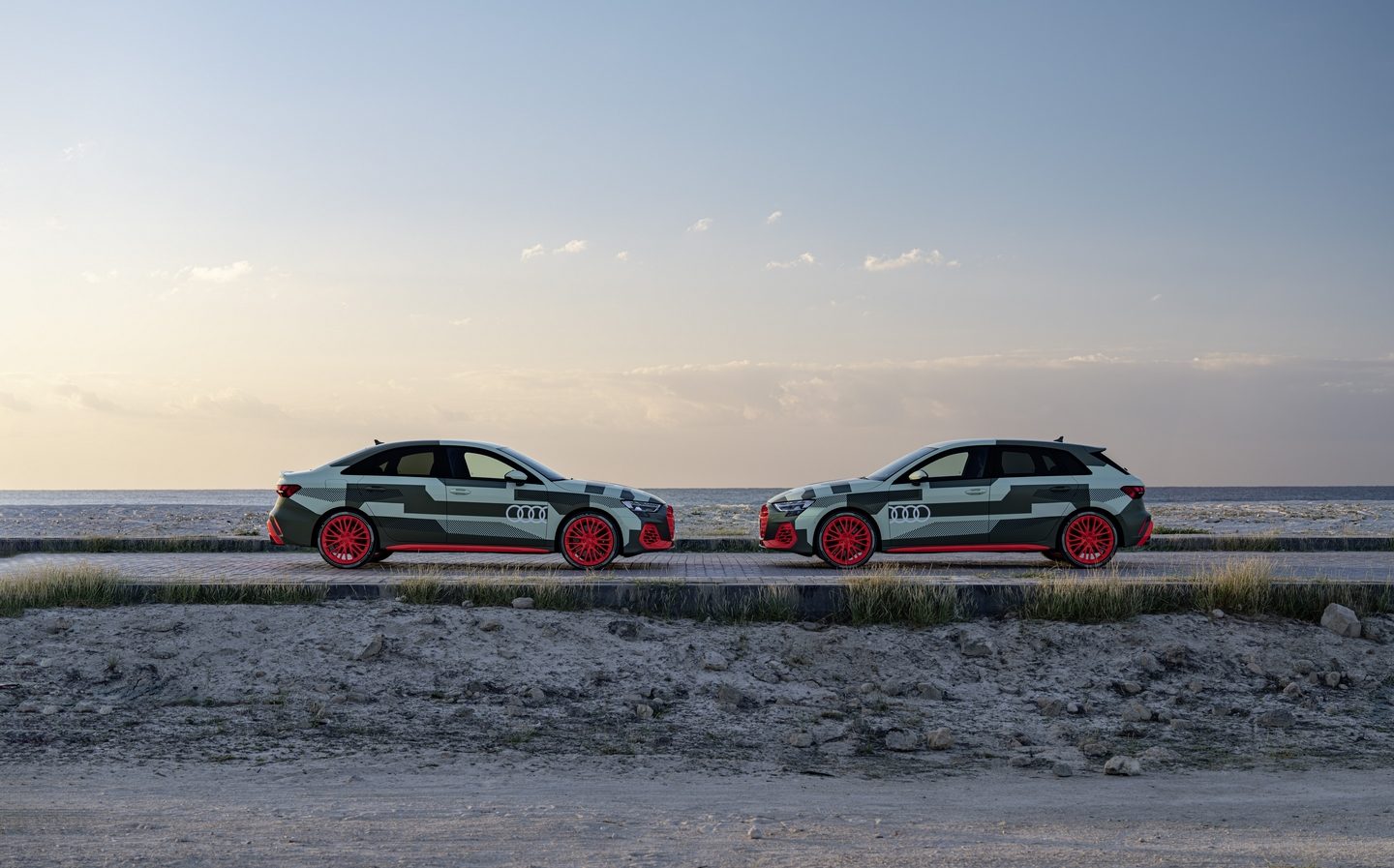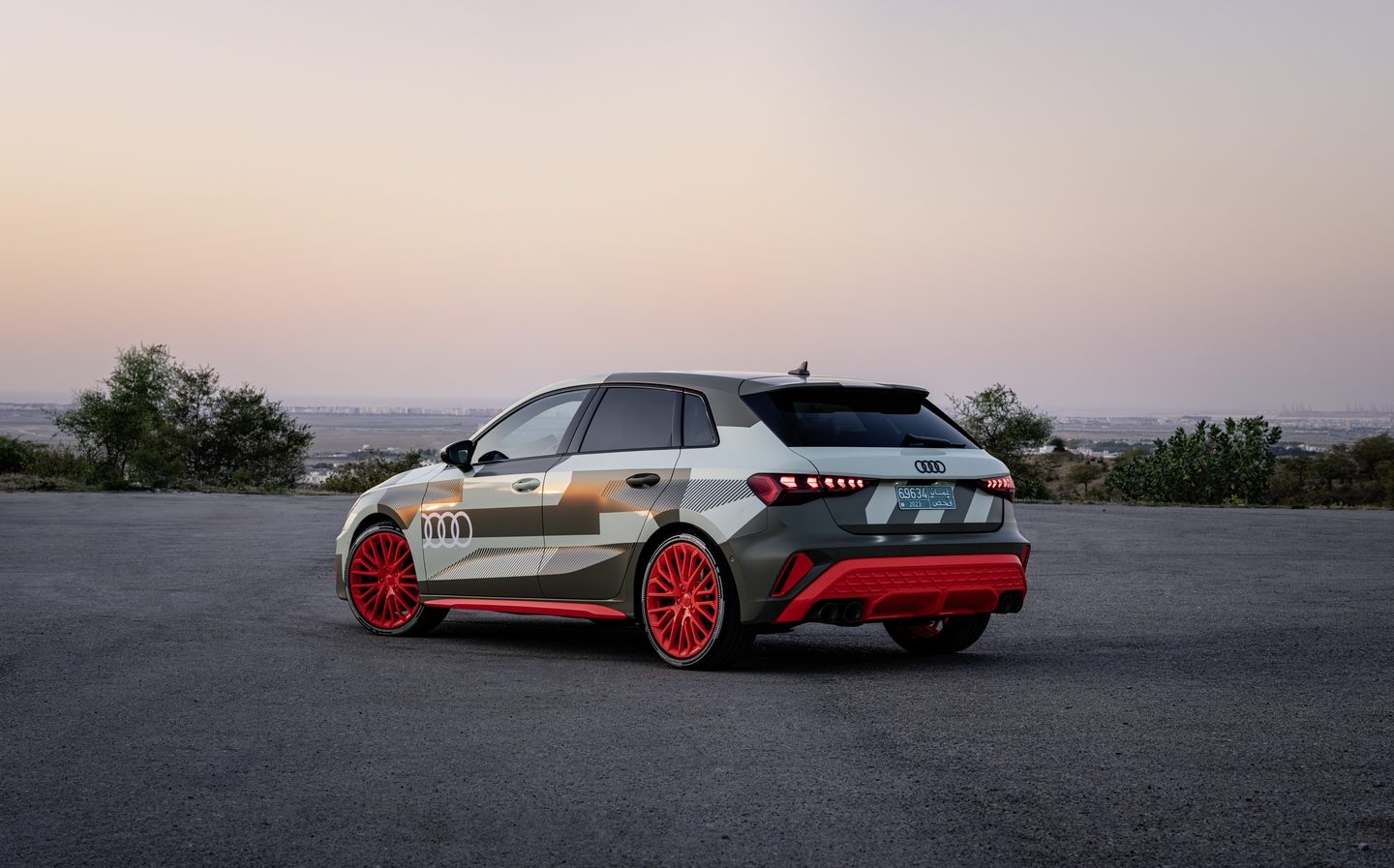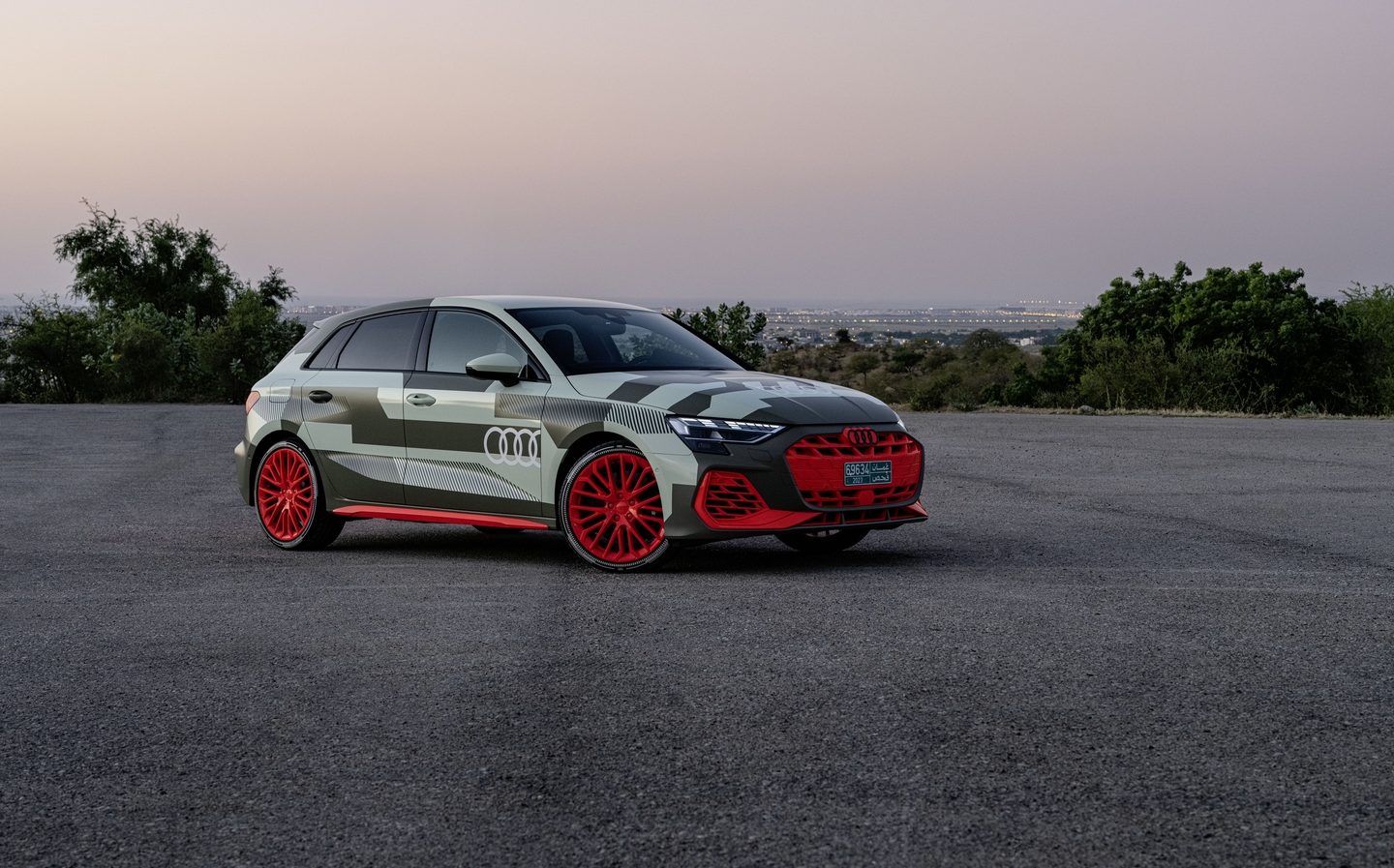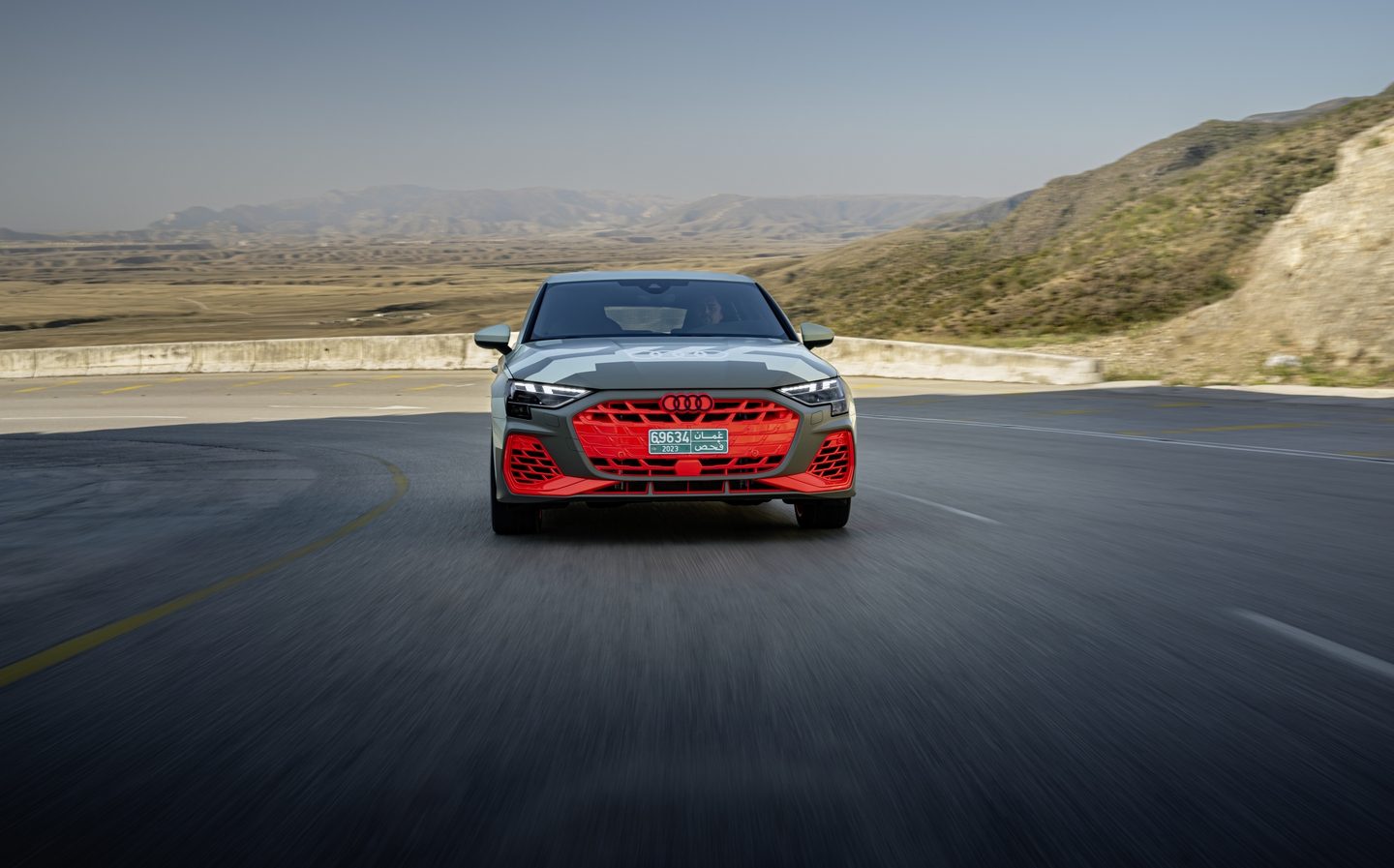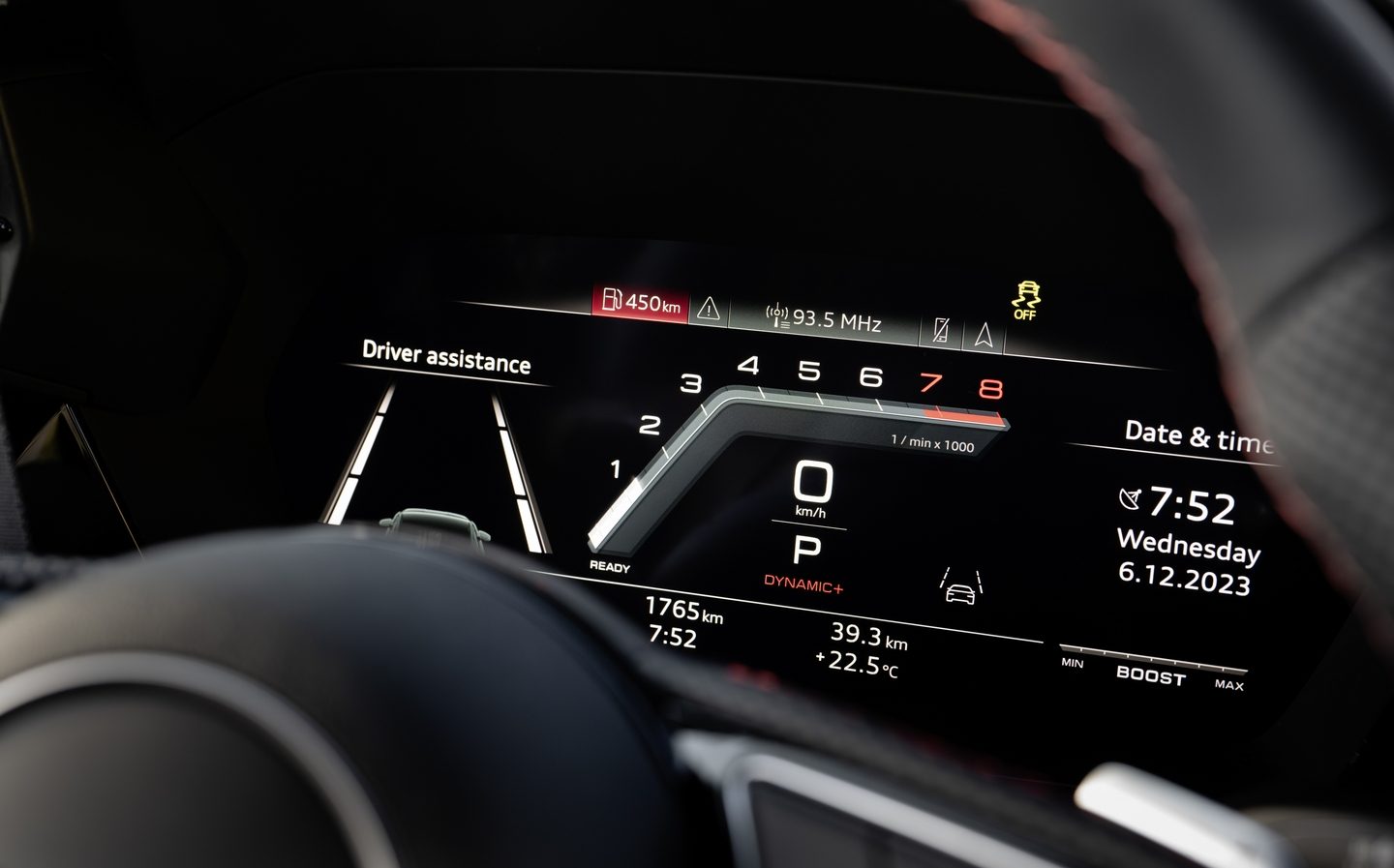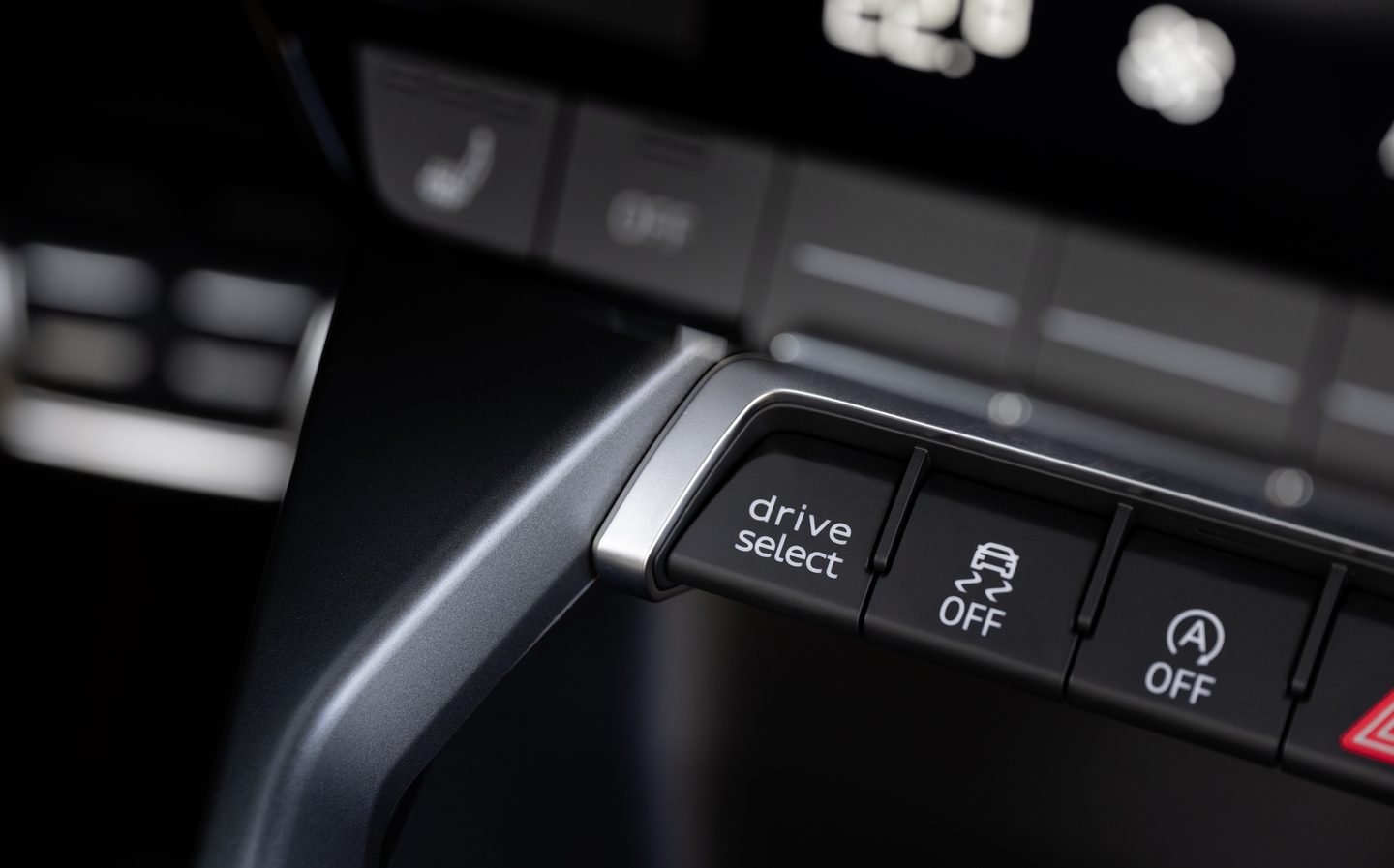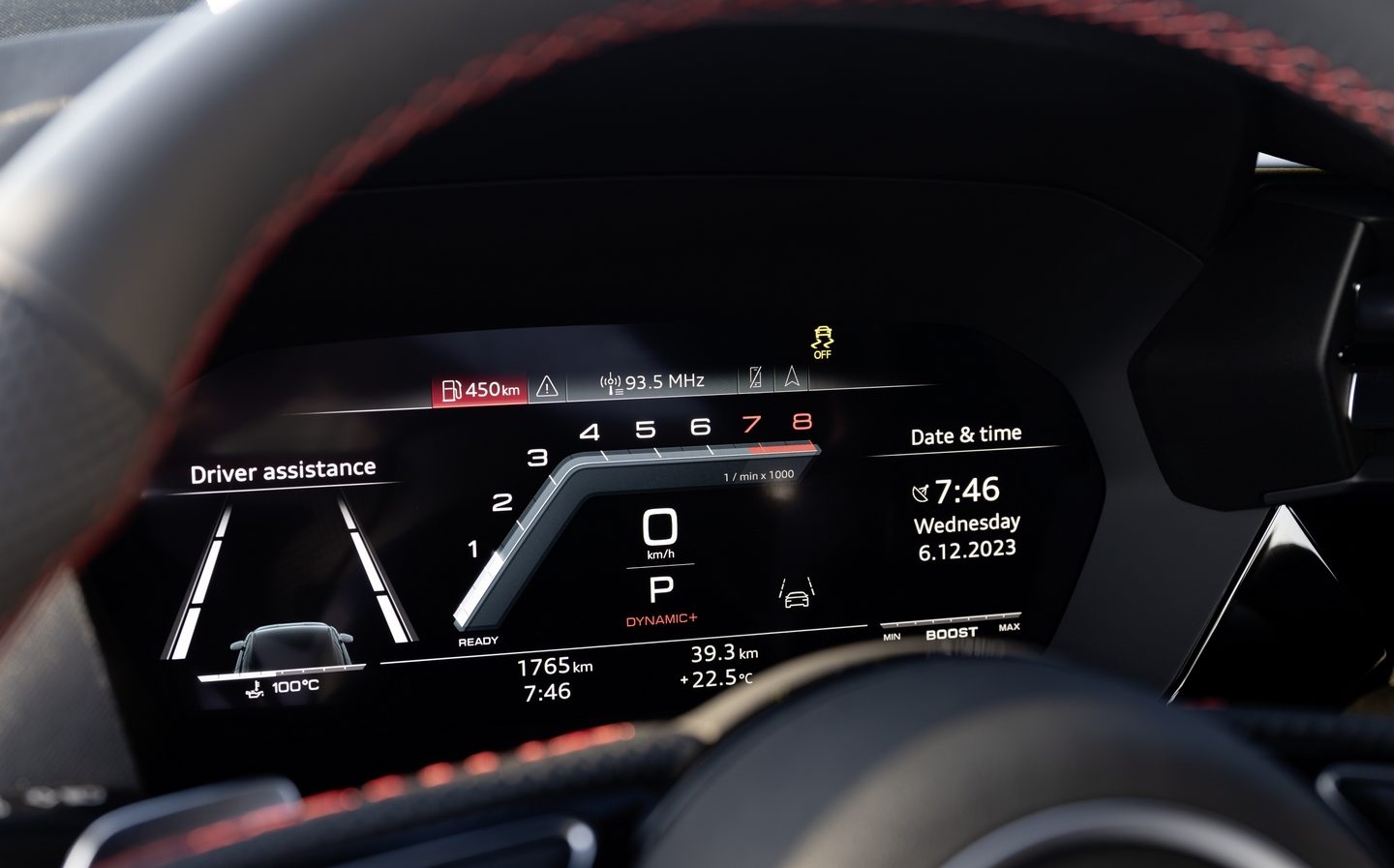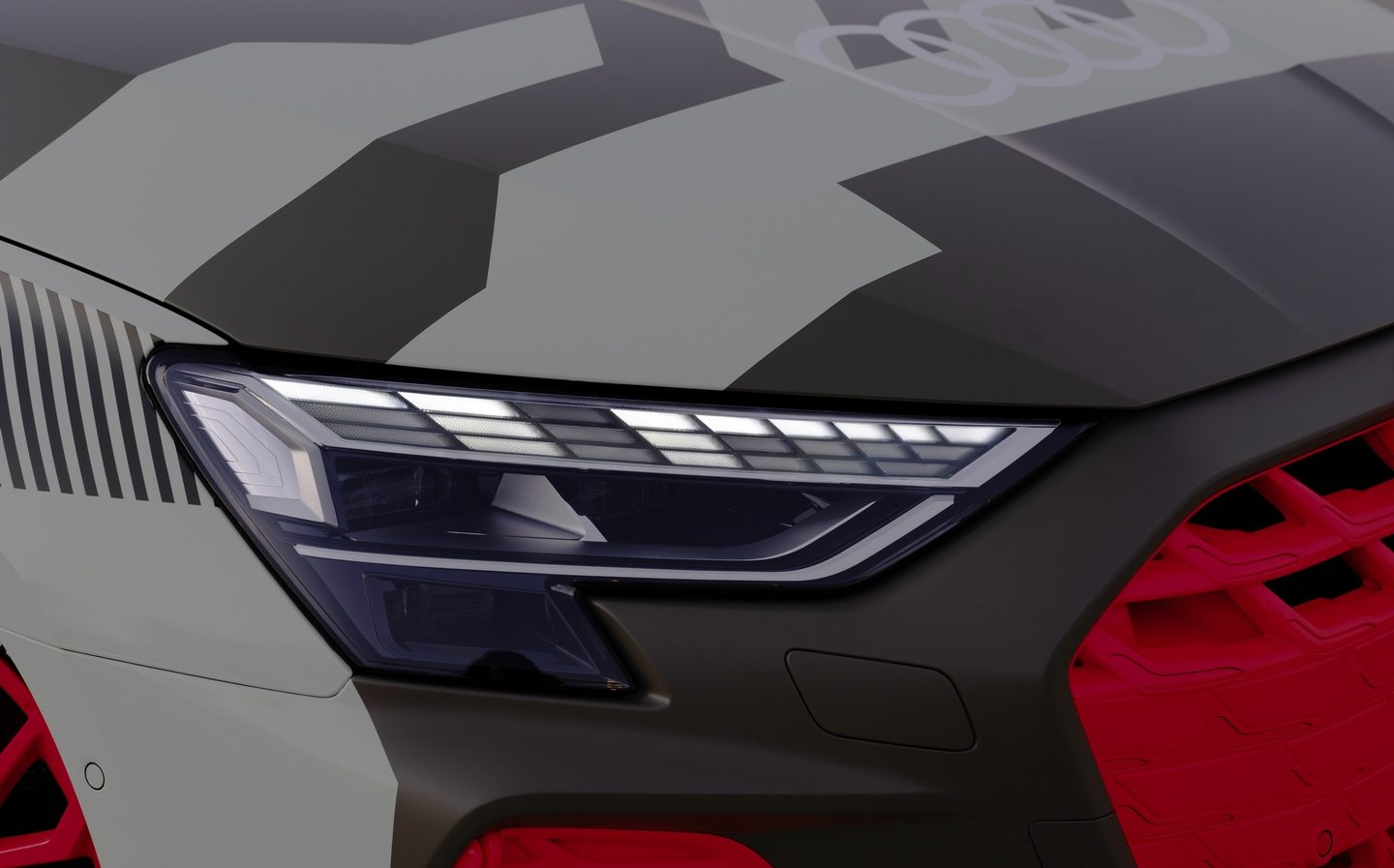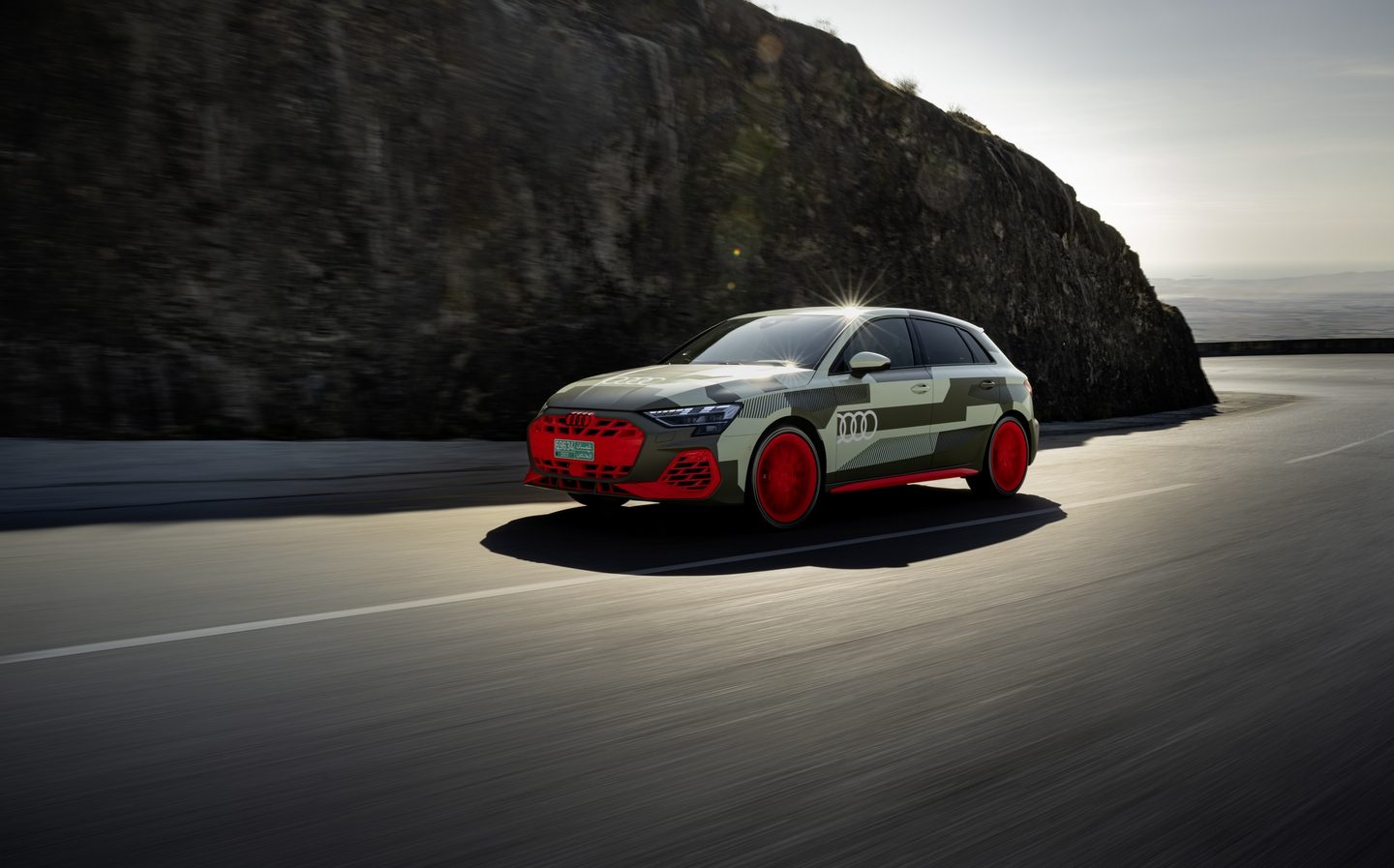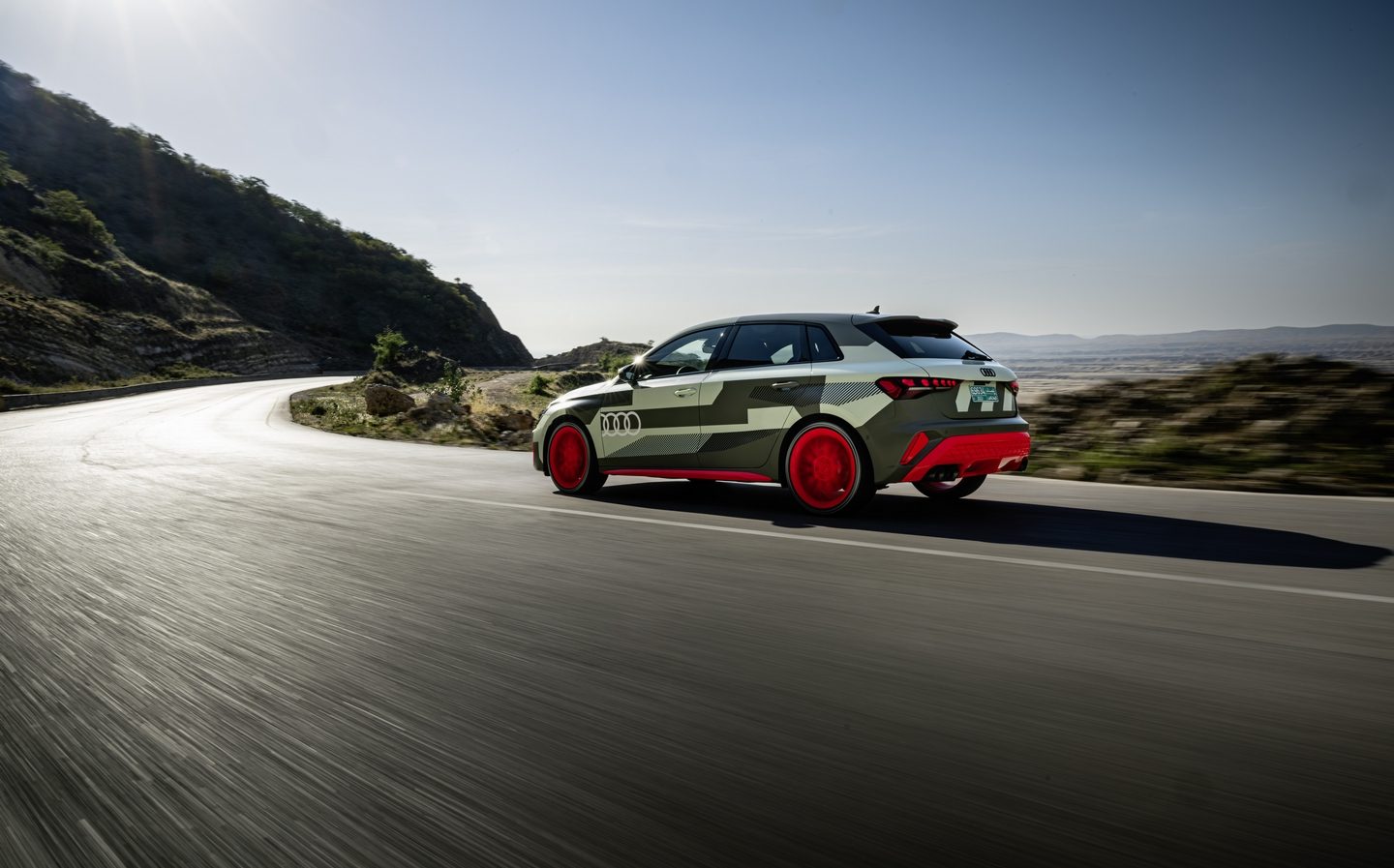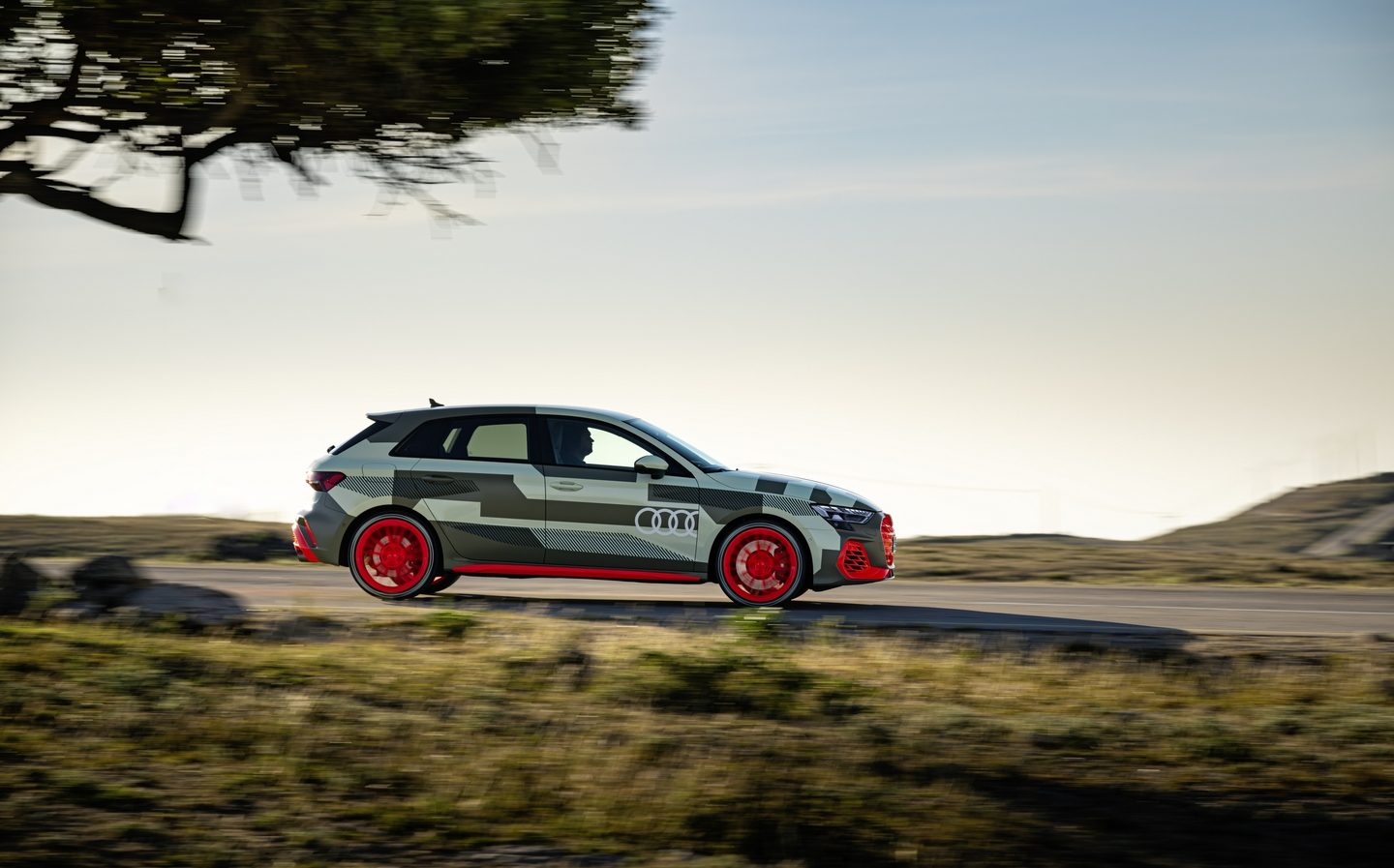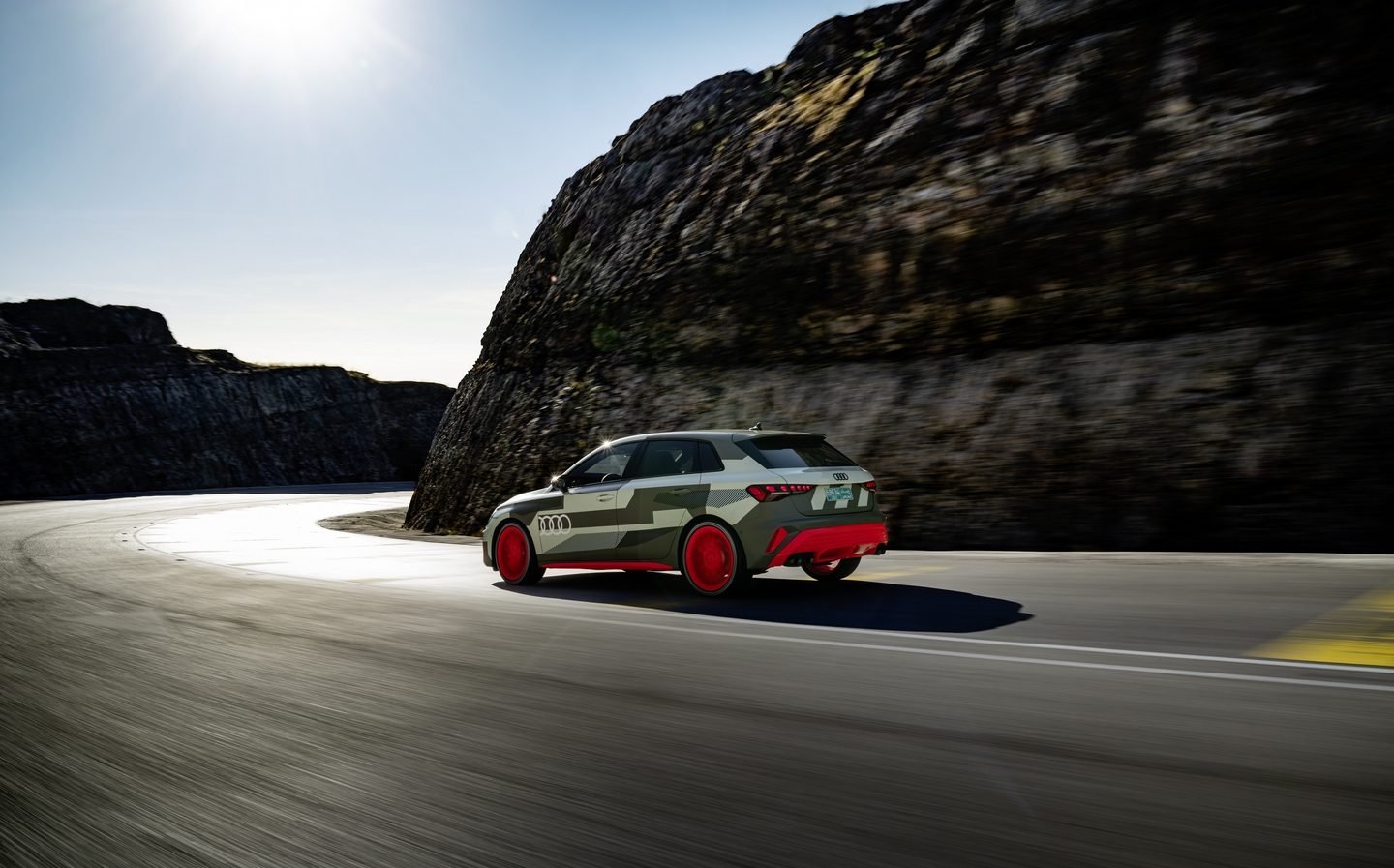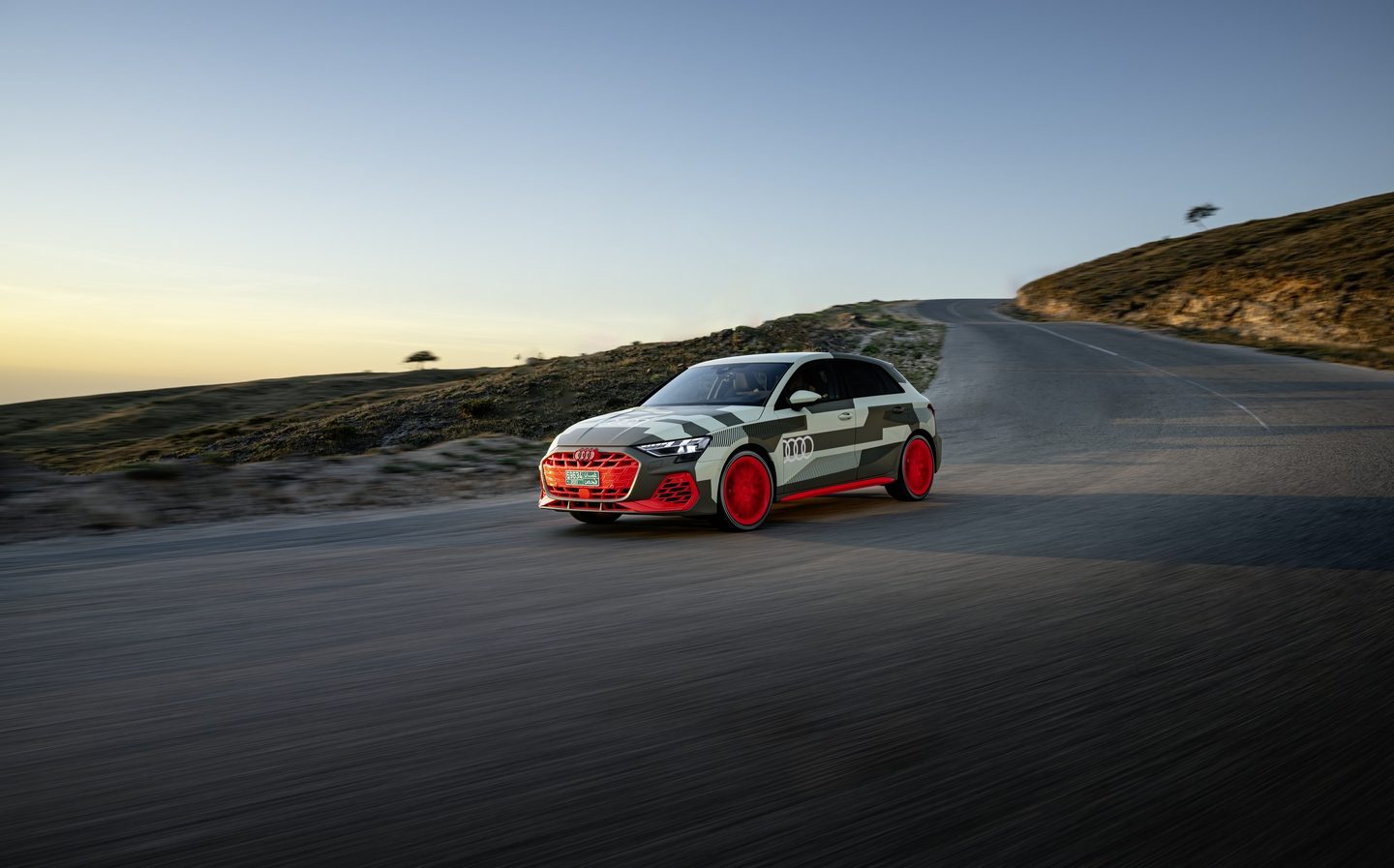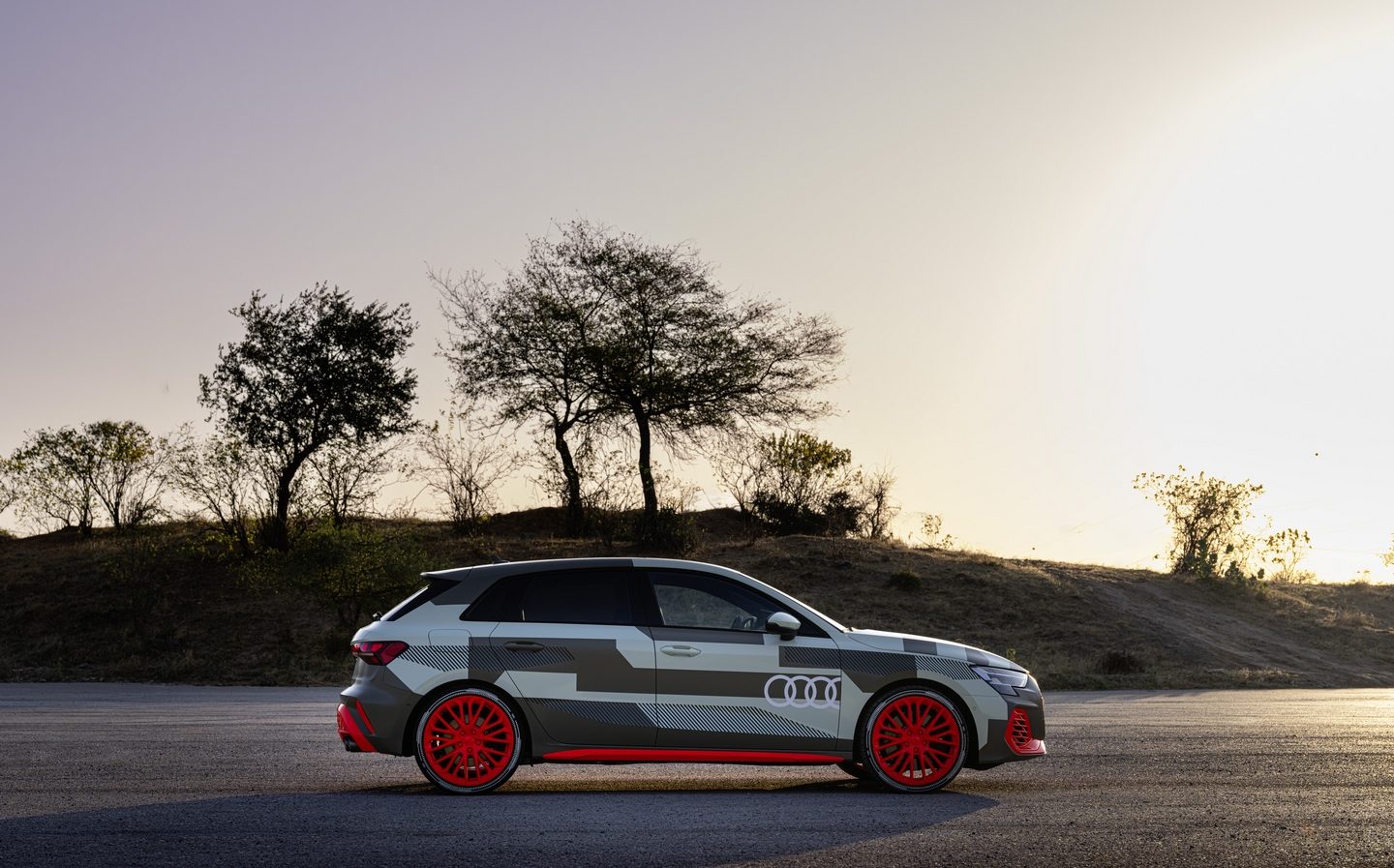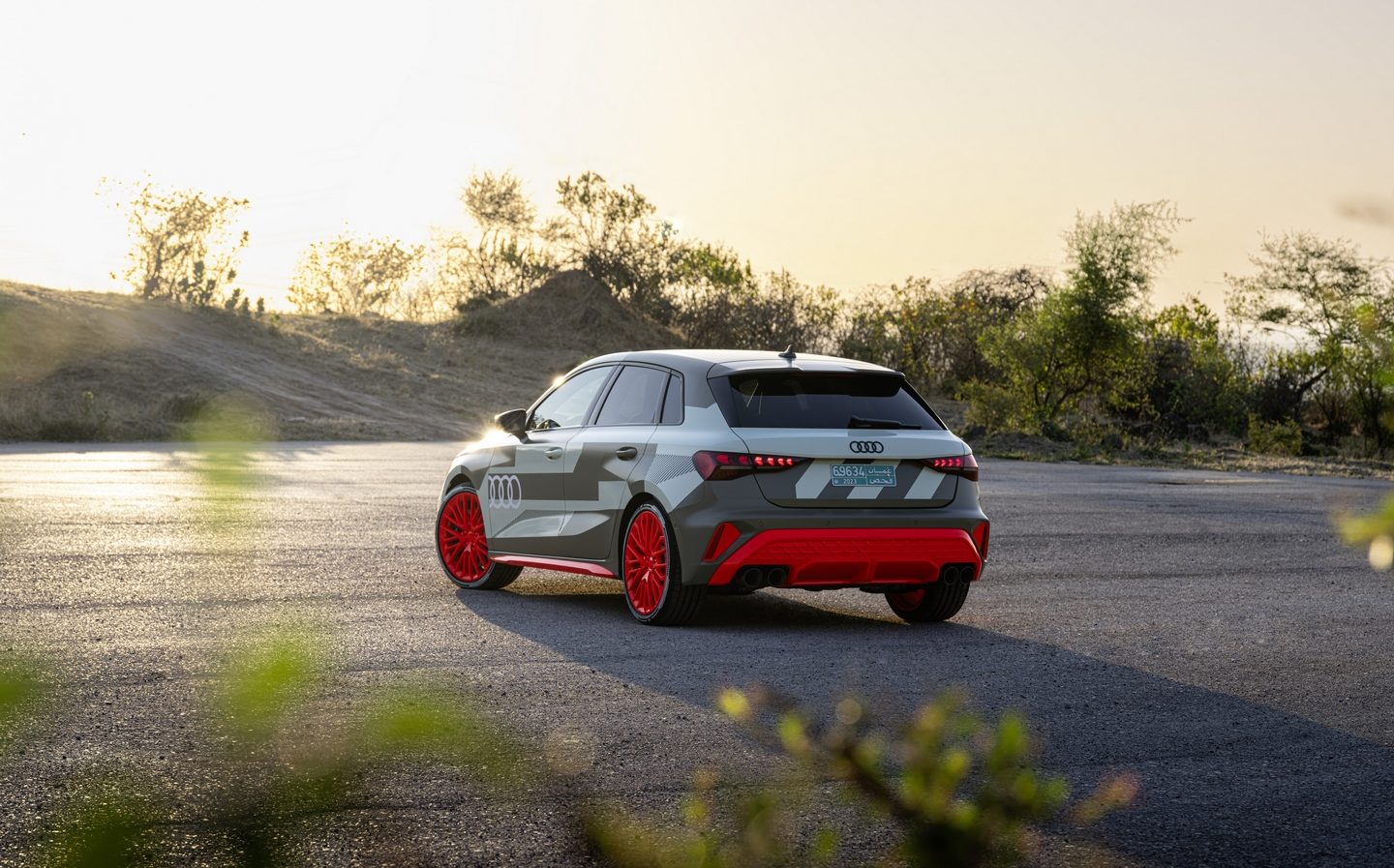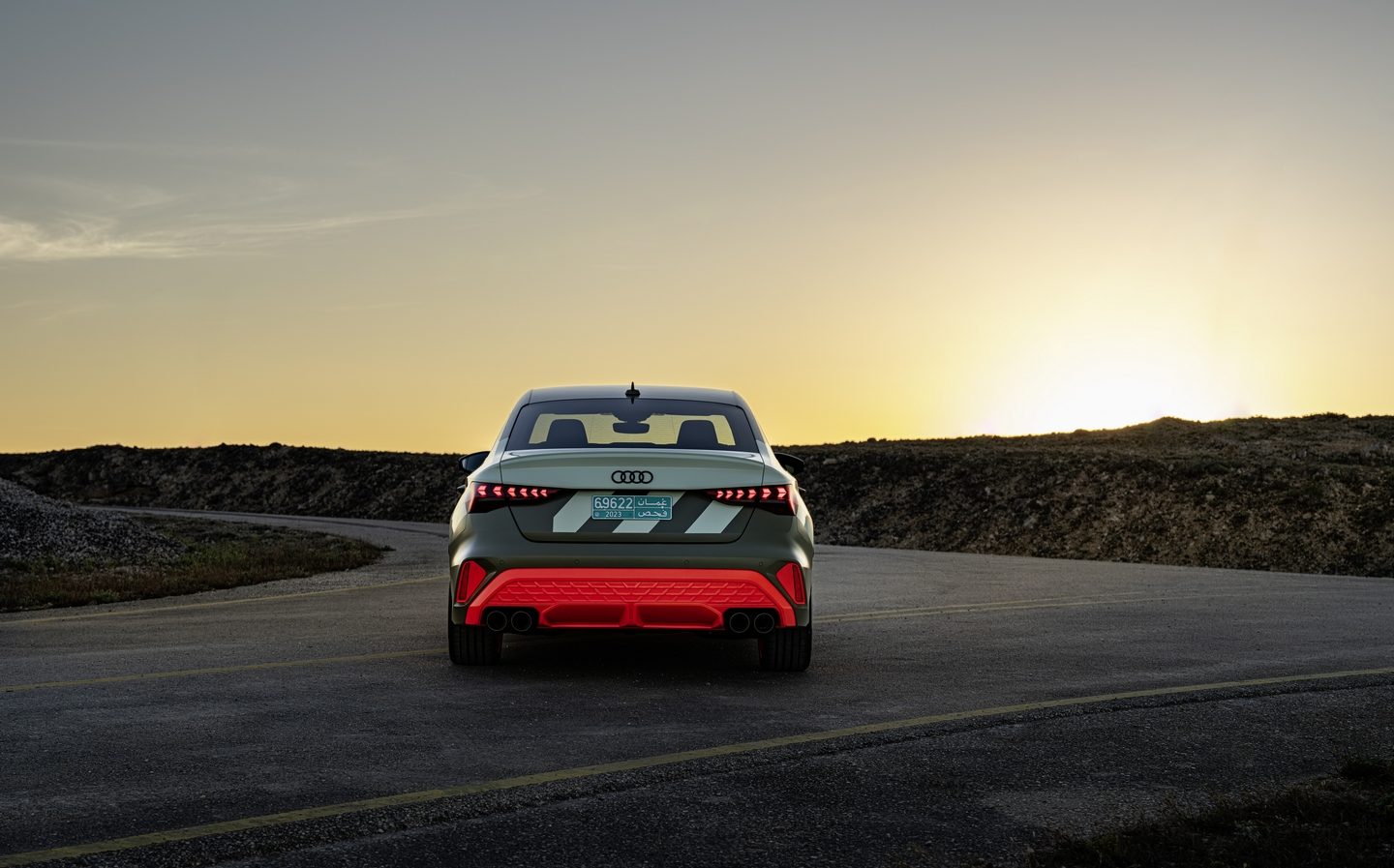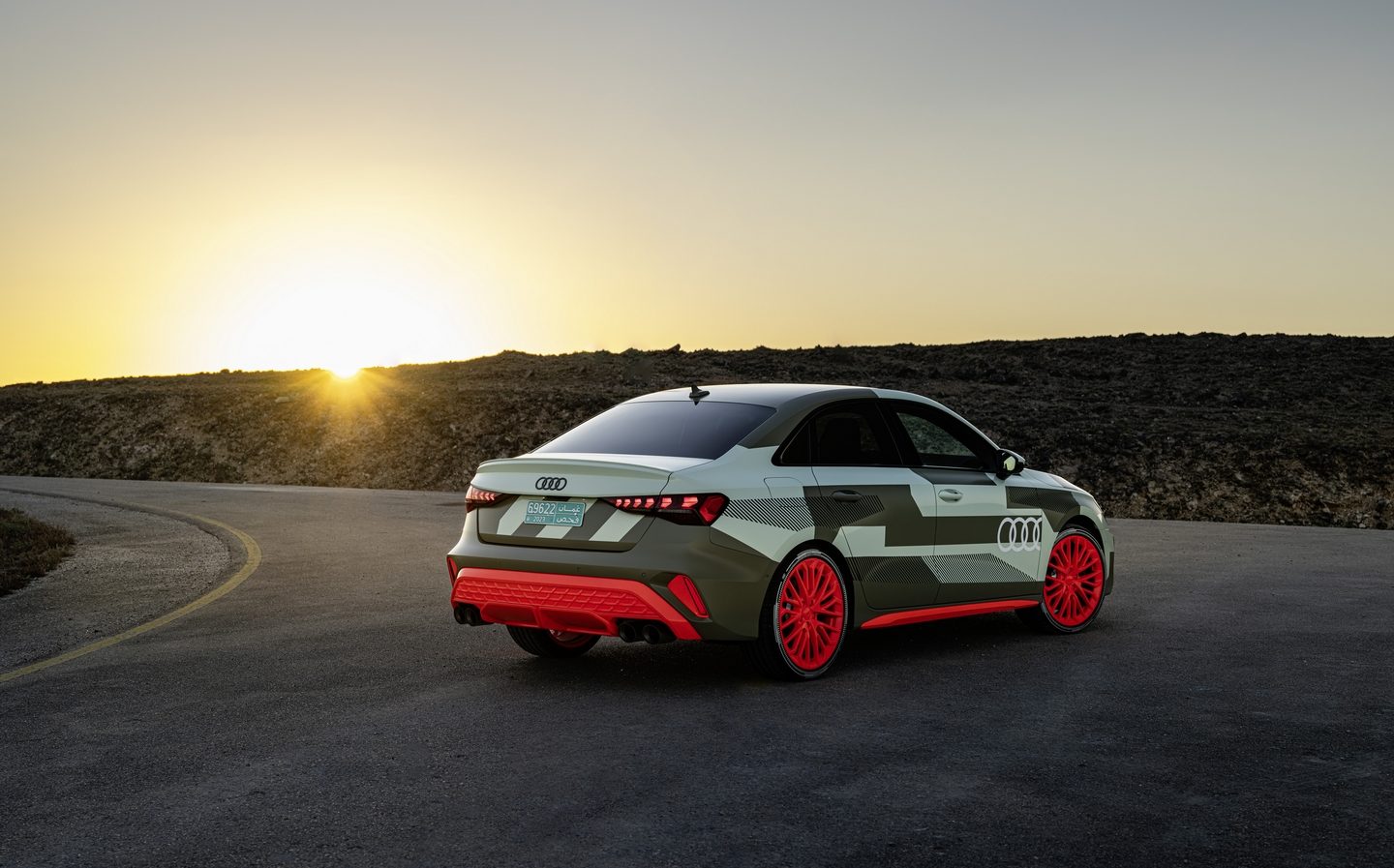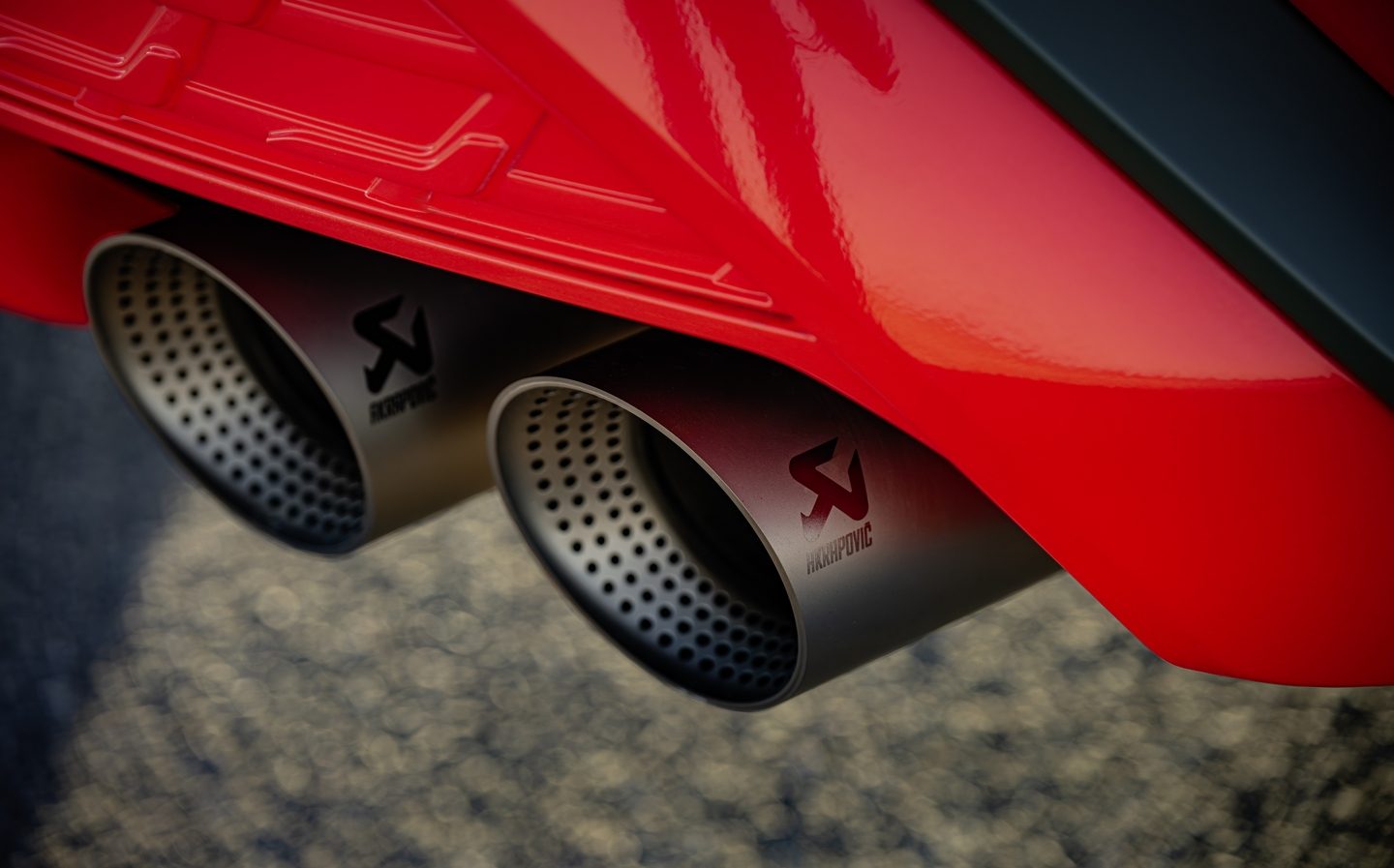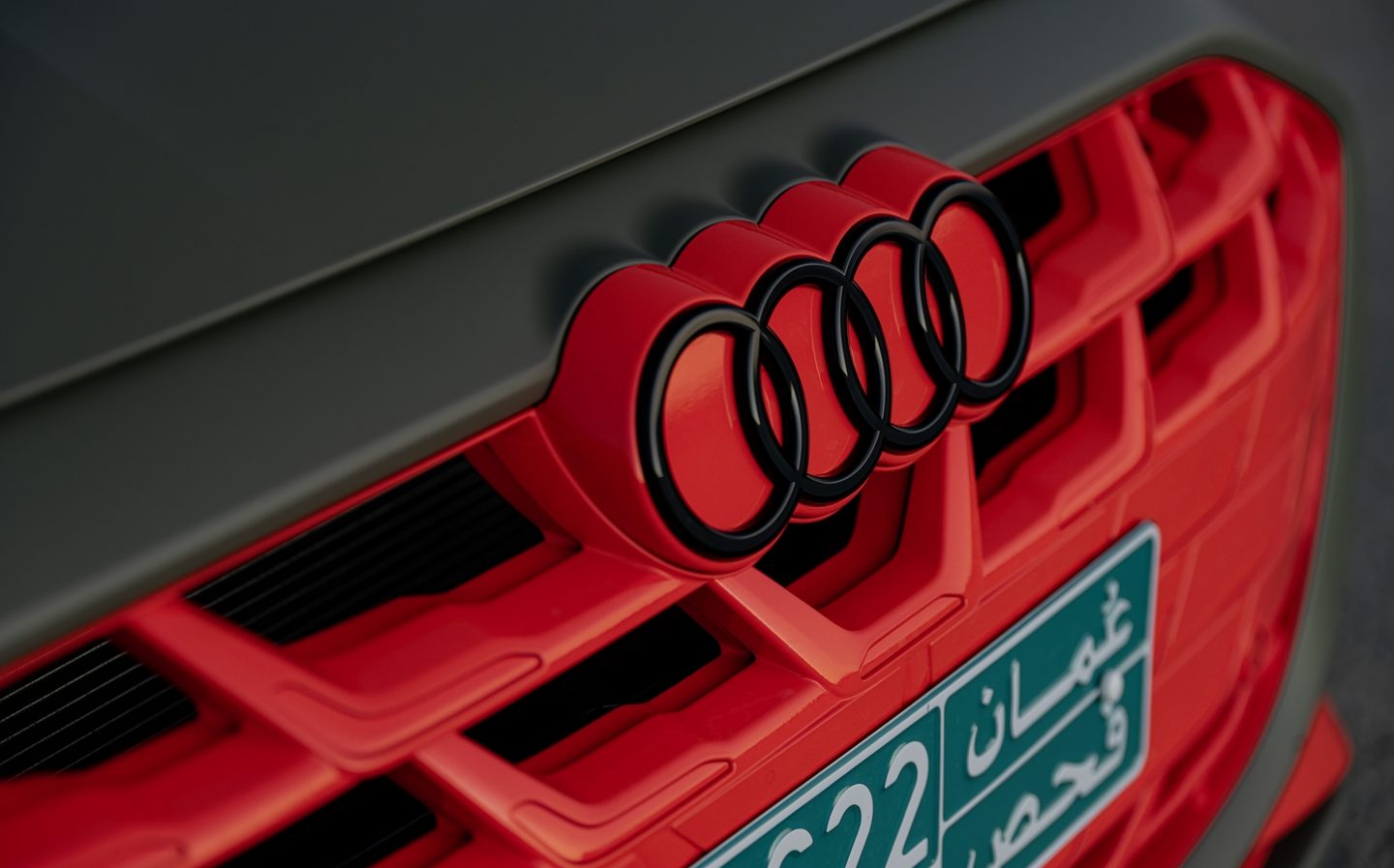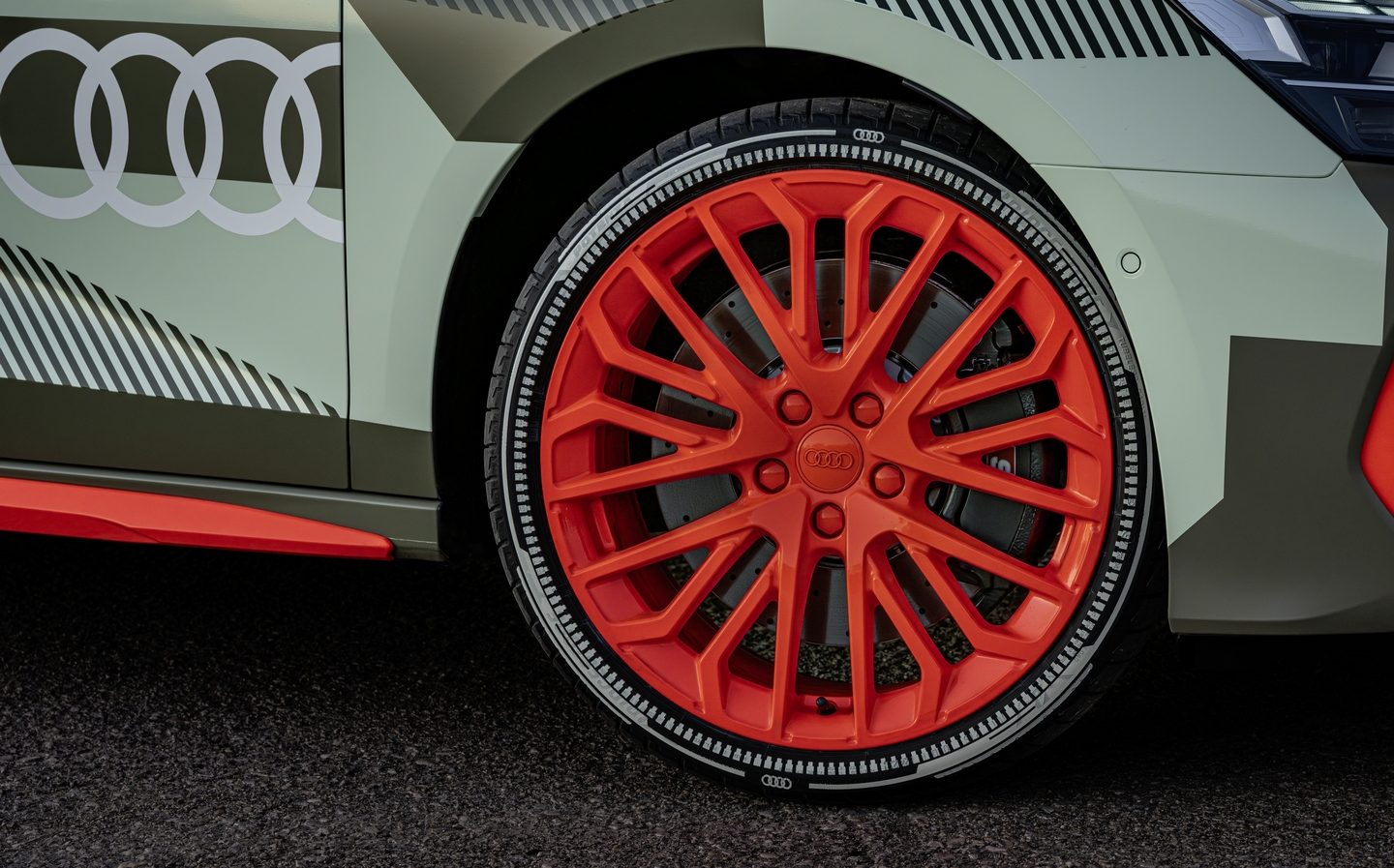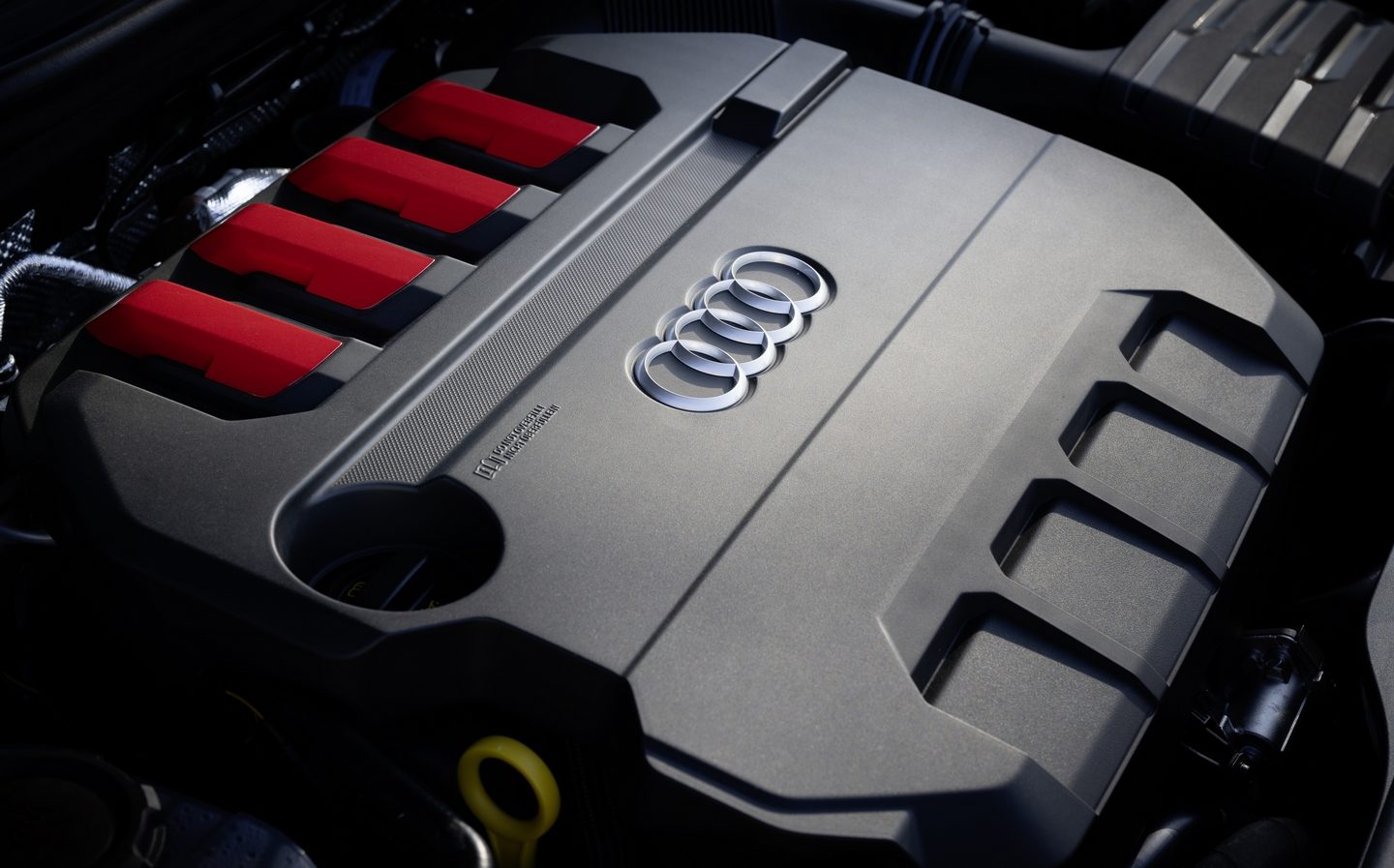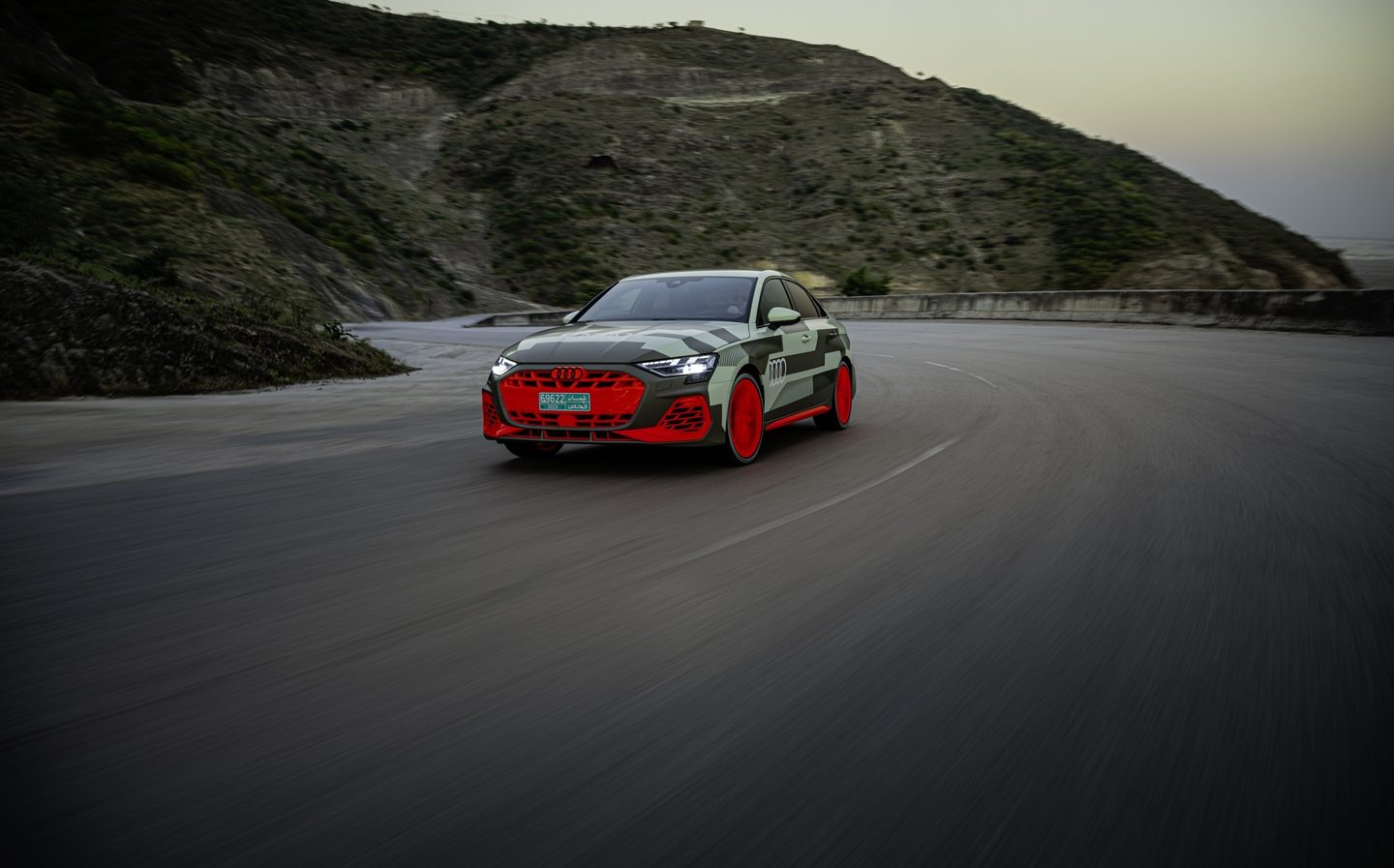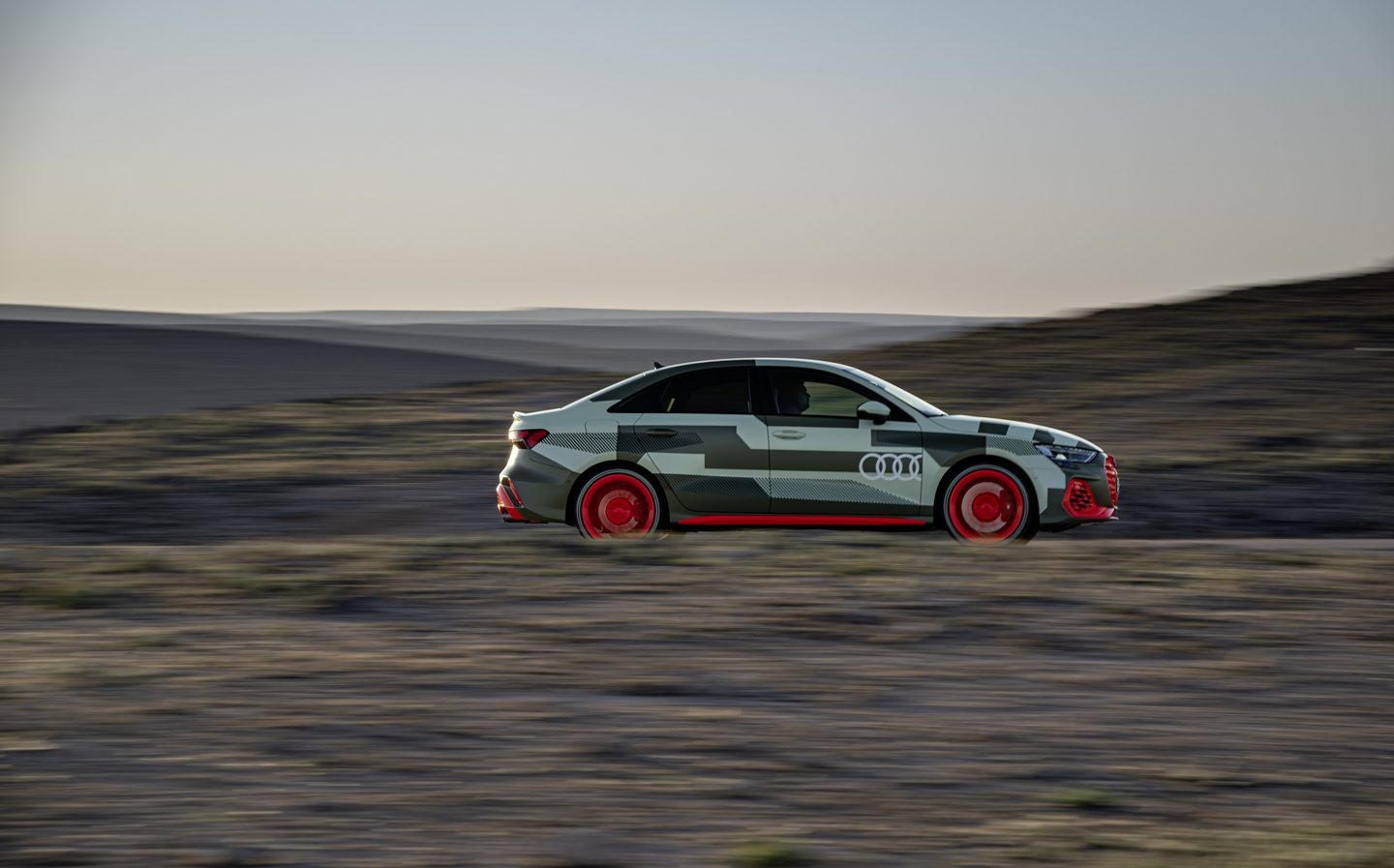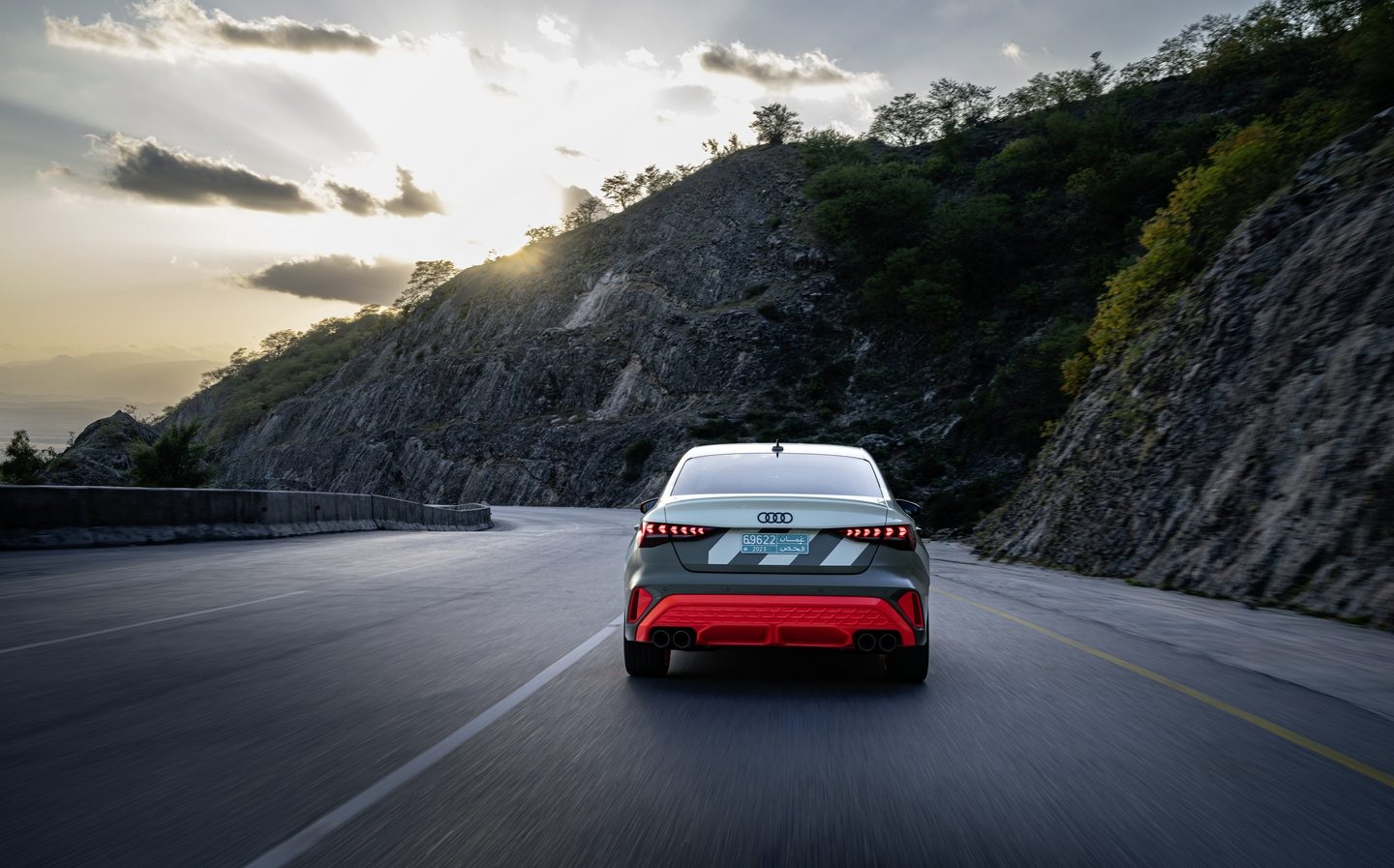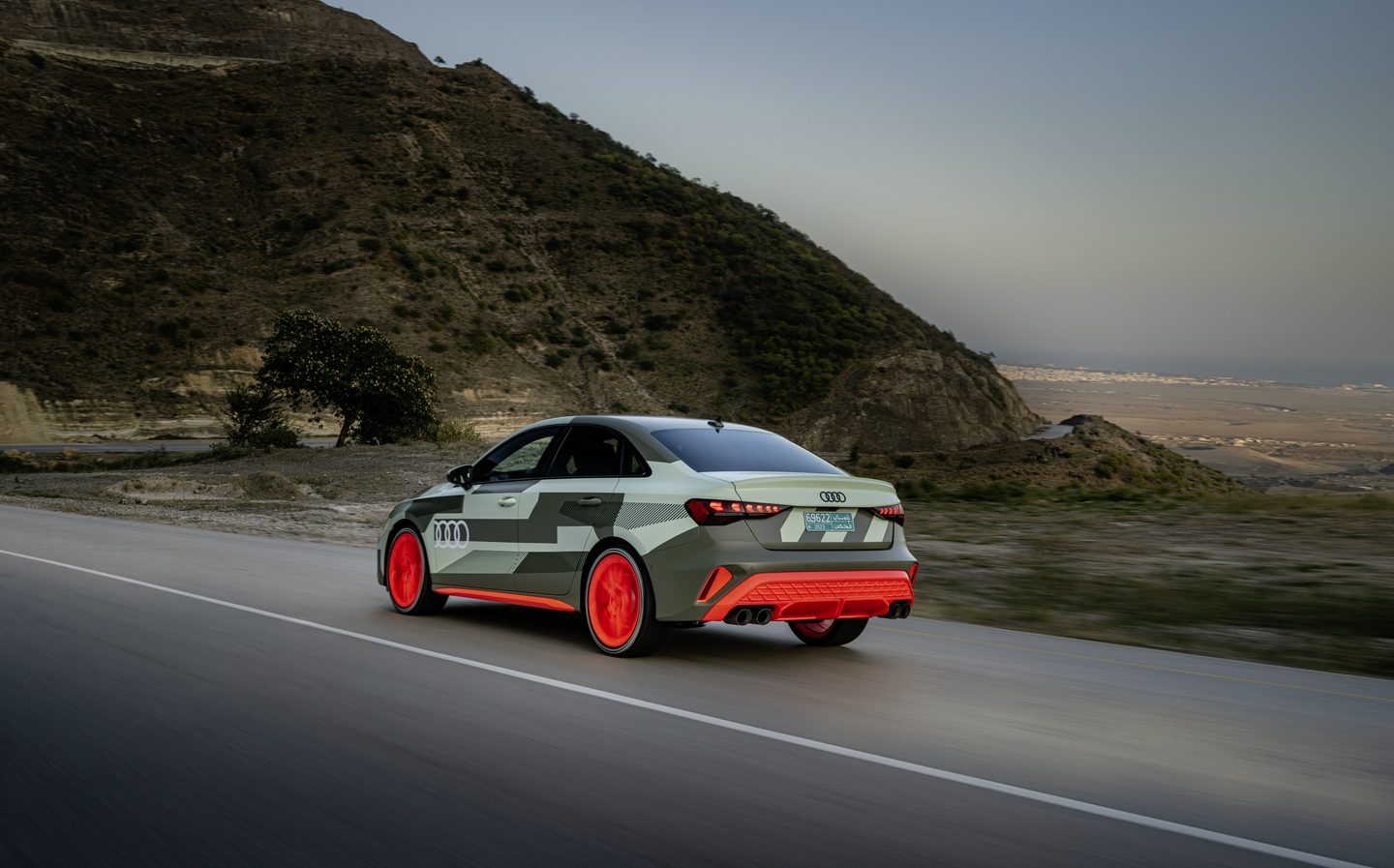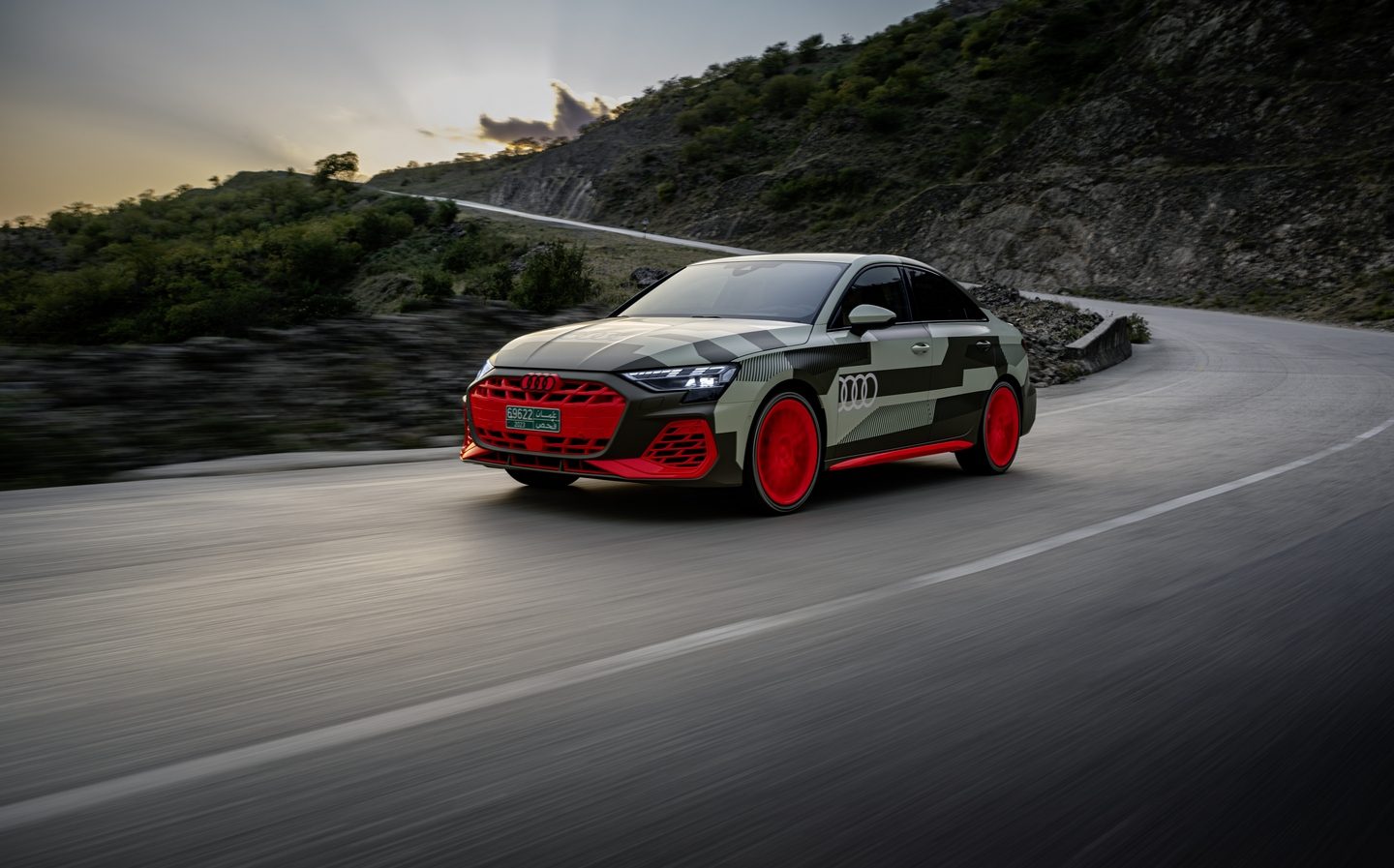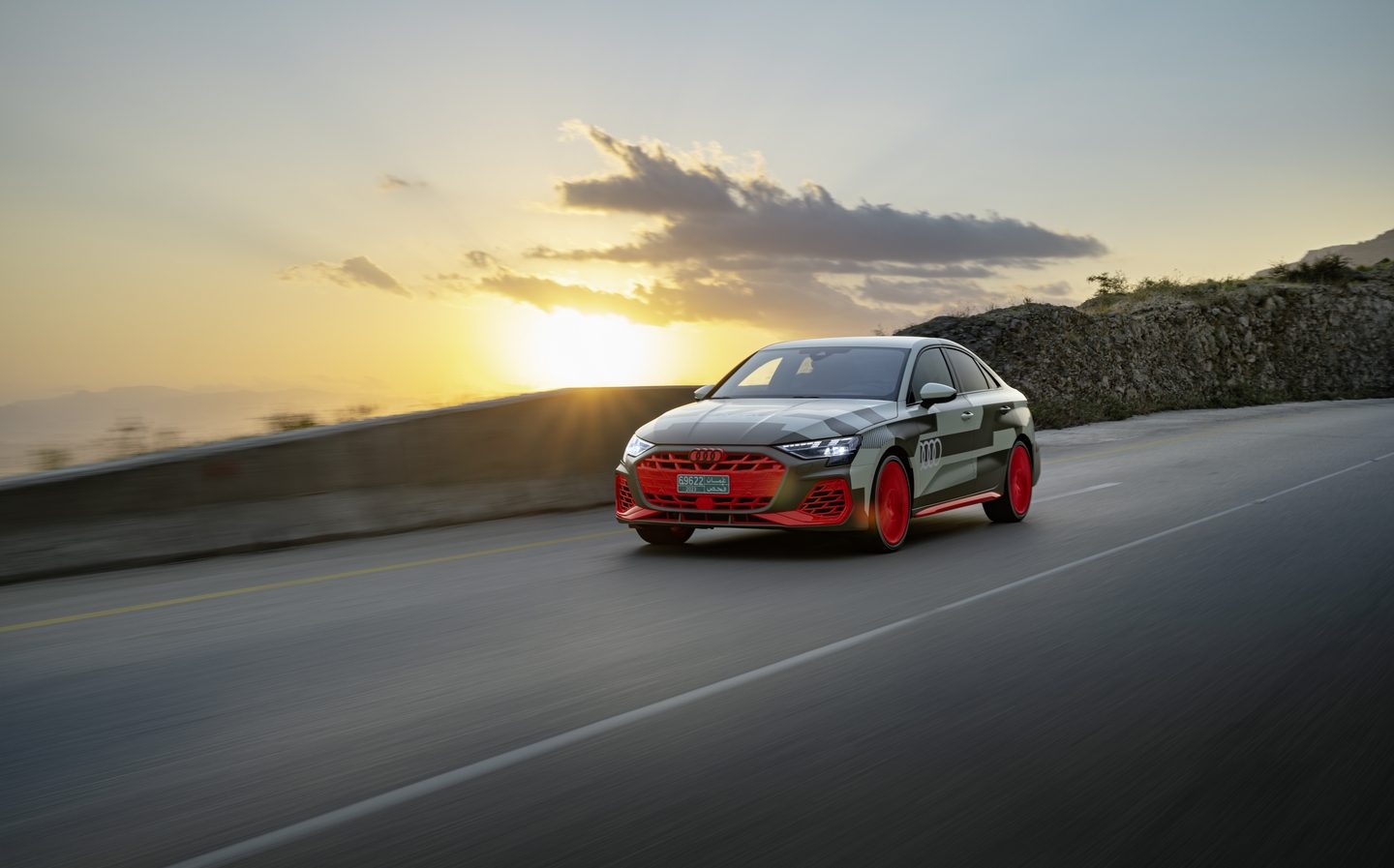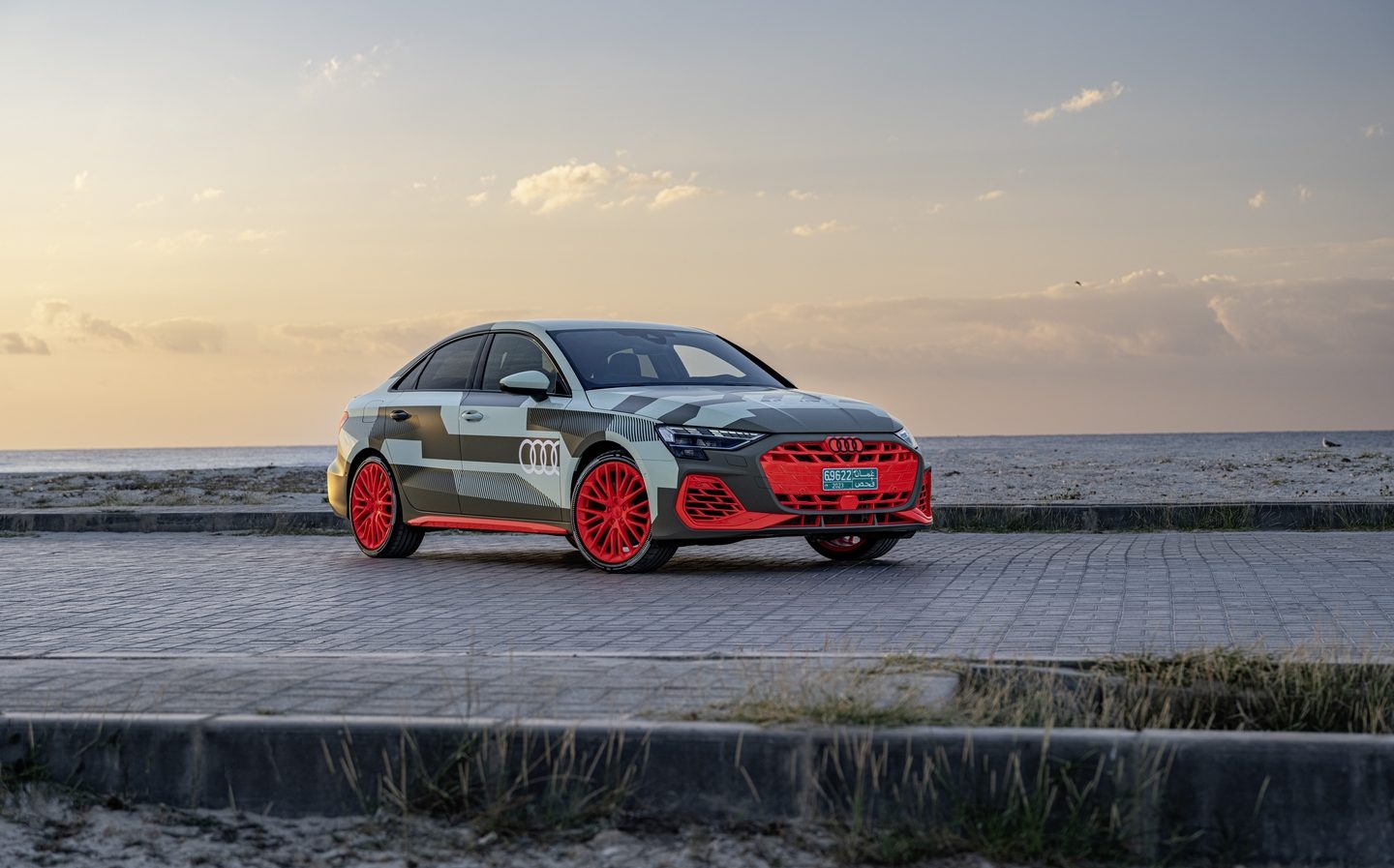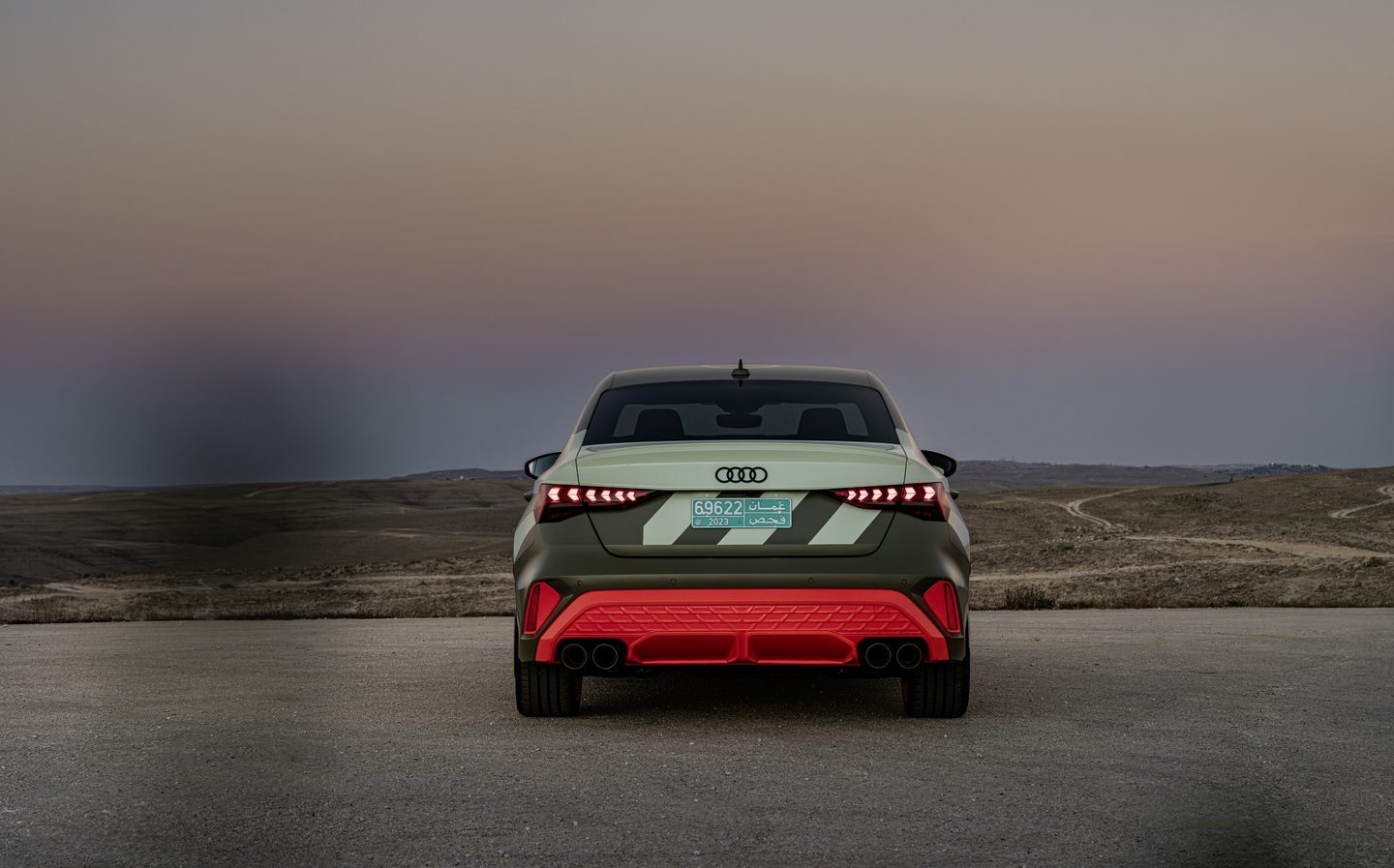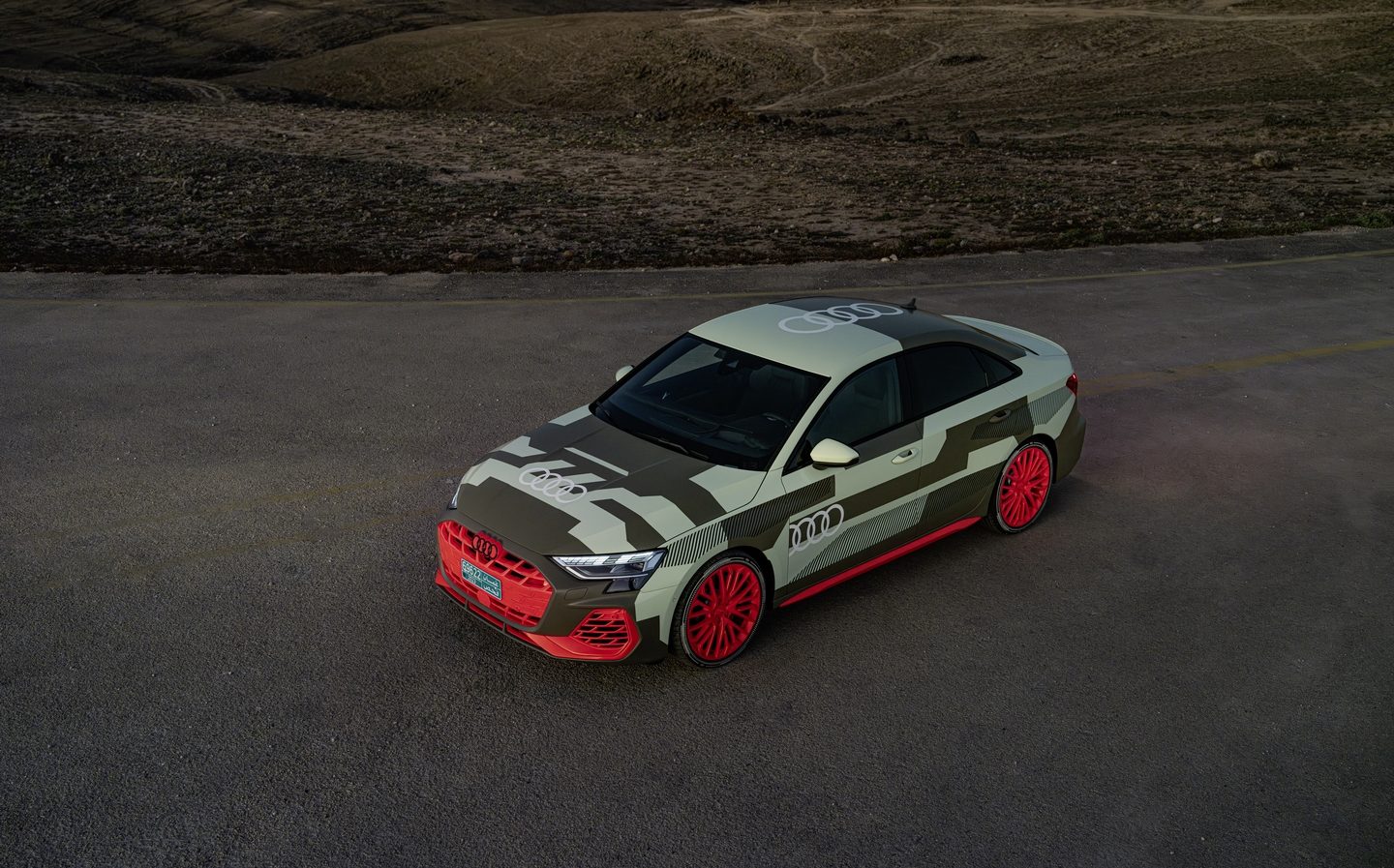Audi S3 prototype 2024 review: Junior hot hatch and saloon steal some RS 3 toys
Taking the fight to its bigger sibling
Sibling rivalry often stems from envy, where the younger of the two lives in the shadow of their older brother or sister, and covets their abilities, comparative freedom or even their toys. It’s not unlike the relationship between Audi’s performance cars, such as the S3 and the rather more senior RS 3.
The gap between the two is set to narrow later this year as part of a wider mid-life update for the Audi A3 line-up. There’ll be the usual visual and technological updates across the range but Audi has gone further for the S3’s reinvention; so much so the company insisted on letting us loose in a camouflaged prototype months before the final product breaks cover to experience the performance upgrades.
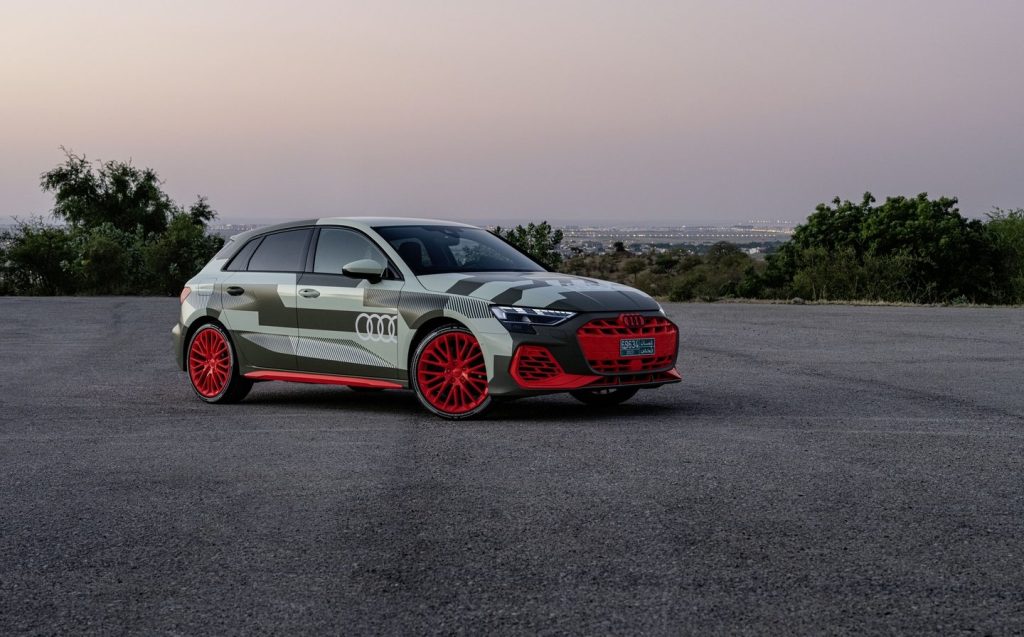
Spot the diff
Borrowed from the RS 3’s overflowing toybox is — and we apologise for using such a technical term so early on — its torque splitter. It’s a sophisticated box of cogs between the rear wheels that allows any required split of twisting force to improve grip and stability.
It’s electronically controlled and — to go into even more detail briefly — uses a multi-plate clutch pack on each of the rear driveshafts, and they are operated independently to divide up the available torque depending on conditions and the selected driving mode.
This same piece of hardware is used in the RS 3 to allow for more extreme settings, including a drift mode for use on track, though the S3’s software is different and doesn’t actively encourage such wanton hooliganism.
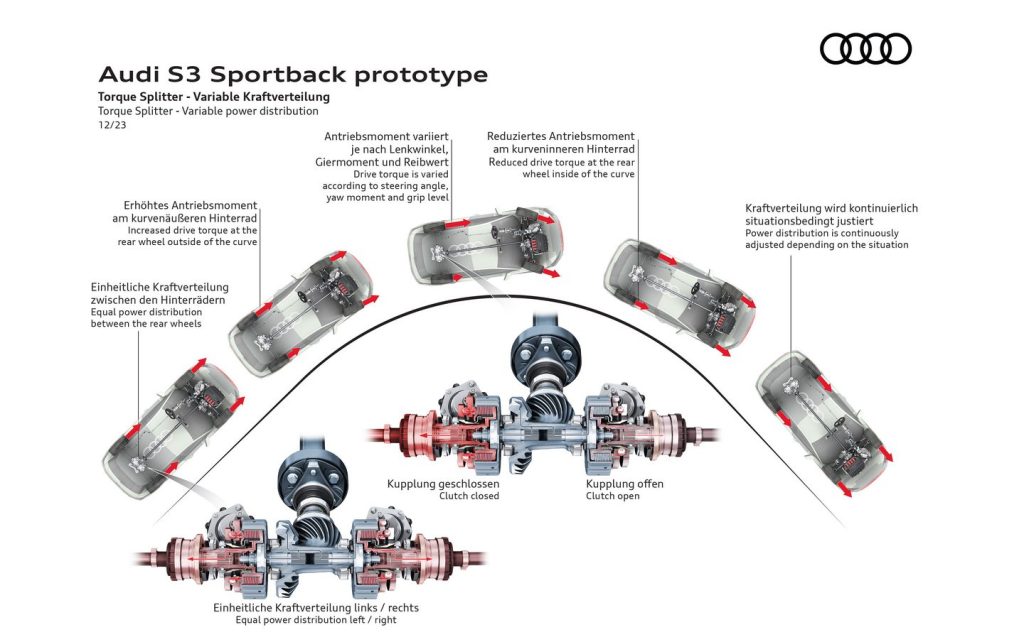
What it means in the real world is that when you find a series of hairpins, as we did, and toggle into the Dynamic Plus driving mode (that’s new to the S3 as well), the car becomes a complete giggle.
The electronic stability control (ESC) system defaults to a sportier calibration in this guise and even in the dry it’s easy to flick the tail of the car out a few degrees under power, catch the slide and exit the corner in a controllable fashion.
It all happens in a well-telegraphed way, but if you fail to read the signs, the combination of the torque splitter and the ESC ensures the car doesn’t stray too far away from your intended path.
Even treated far too roughly the new S3 never goes very sideways because, while the splitter can divvy up torque between the rear wheels to any ratio, only a maximum of 50 per cent of the engine’s output goes to the rear axle. Indeed, a lot of the time, the S3 operates in front-wheel drive.
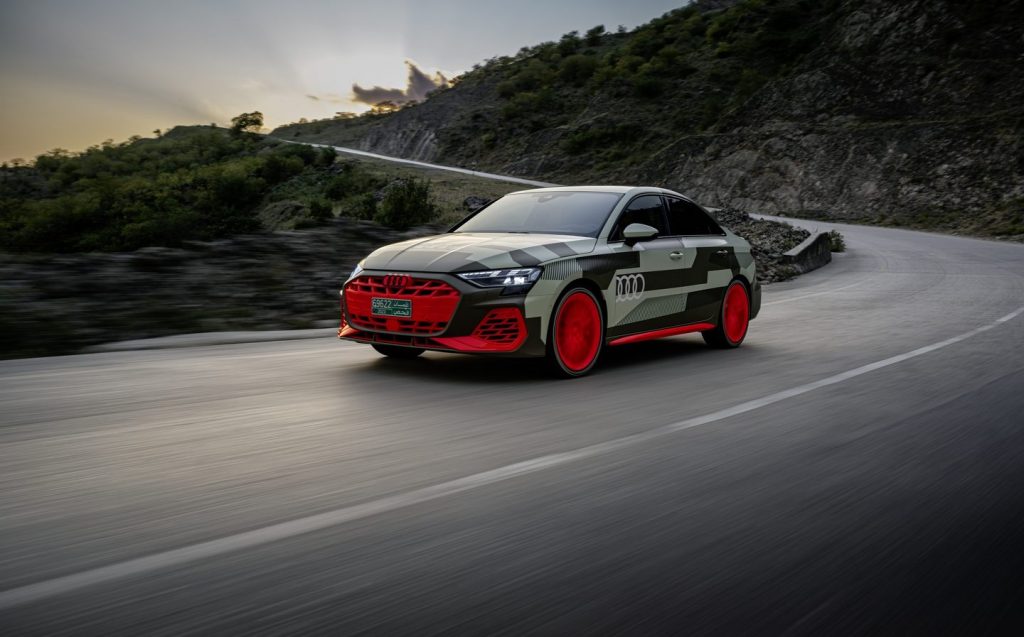
But you don’t need to be burning the expensive new Bridgestone Potenzas to enjoy the S3. Driven moderately quickly over a twisting road, the torque splitter enhances the experience — and at the same times makes it safer.
It can stabilise the car without need to resort to applying the brakes if the rear end is starting to step out by, for example, adding extra torque to an inner rear wheel. That’s more satisfying from the driver’s point of view.
That said, the ESC system in the S3 is also new and claimed to be capable of keeping the car’s occupants safe while also allowing the driver to get their kicks when in the mood.
A chassis to match
There must have been a bit more cash left in the budget after Audi’s engineers were finished implementing the torque splitter, so they turned their attention to the rest of the chassis.
In a bid to enhance steering feel and response, new pivot bearings are used at the front, doubling the negative wheel camber (where the tops of the two front wheels are closer together than the bottoms). This in theory should lead to better grip and increased response to input from the driver mid-corner.
The front wishbones have been stiffened up in the name of response, too, while the variable-ratio power steering (the more you turn the wheel, the sharper the steering becomes) has also been tweaked.
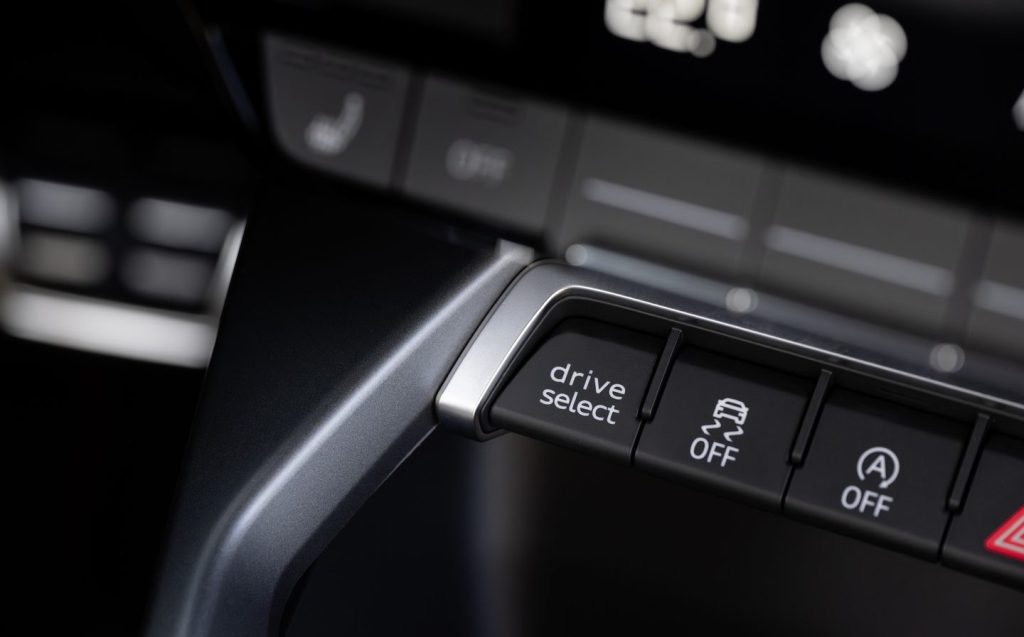
It’s impossible to separate out the results of this work from the effect the torque splitter has on the driving experience, but there’s no doubt the new S3 is quicker to respond to your steering wheel movements when tackling a twisty road. Yet it could never be called nervous or twitchy when you just want to get to your destination on the motorway.
Audi is confident more S3 owners than ever will take the scenic route where possible, so it has also upgraded the brakes and the standard tyre specification to sit on new 19in alloy wheels. Buyers can opt for a set of Falken tyres optimised for dry-weather handling, resulting in a feel that is described as “particularly sporty”. We found the brakes a fraction sharp at first but easy to modulate once they’re applied, and there’s absolutely no doubting the stopping power on tap.
Power hike exploits the chassis upgrades
As the S3’s chassis improvements were rolled out, someone at Audi must have realised that the car’s newfound ability to go around corners and make its driver smile outshone the workings of the engine, so it was handed over to the powertrain department to come up with a few inexpensive upgrades of their own.
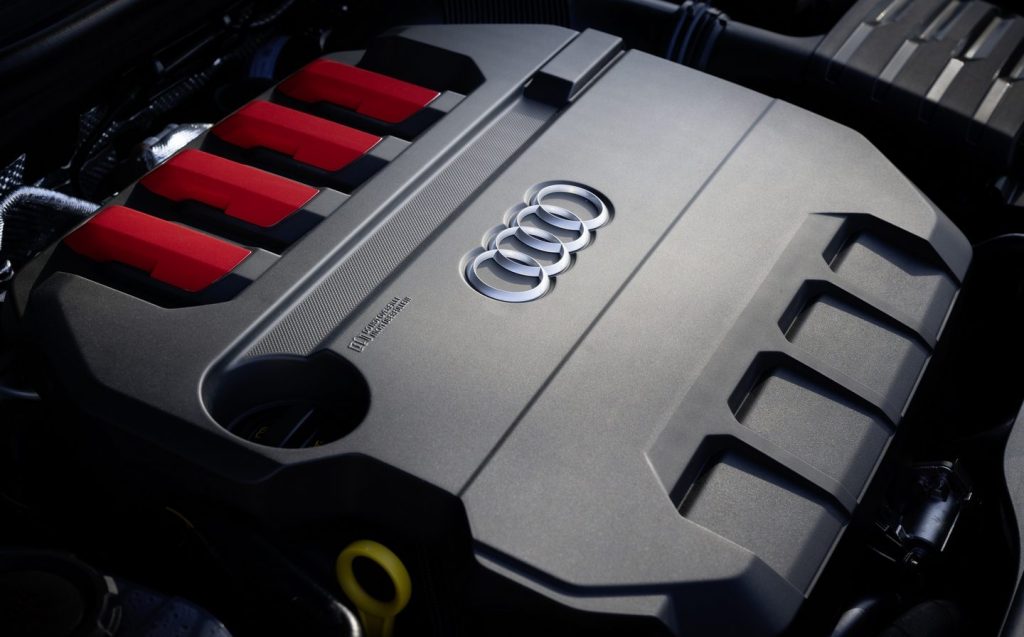
Hiding their work from the RS 3 team, they managed to increase peak power from 305bhp to 328bhp, while also upping maximum torque by 15lb ft to 310lb ft. Just as importantly, that peak torque figure is now available over a wider rev range.
The stopwatch says the S3 is now a tenth of a second quicker to 62mph from rest and it’s still limited at the top end to 155mph.
On the move it feels feistier than before for sure, with great performance and traction off the line and a serious turn of speed in the midrange of revs.
Aside from the increased outputs, Audi has changed the operation of the turbocharger so it is “pre-loaded” at low to medium engine speeds and throttle openings (in the Dynamic and Dynamic Plus driving modes only). That means it’s kept spinning at a constant speed and therefore quicker to react when you put your foot down.
It’s modern-day anti-lag, if you like, though without the deafening exhaust pops and bangs of WRC’s yesteryear, and we didn’t spot any flames coming out of the quad exhaust outlets. More’s the pity.
Noisy when you want, quiet for bank jobs
Look a little closer at the exhaust tips of our test car and you’ll spot Akrapovič branding, as it’s wearing the optional performance exhaust system. The tailpipes are titanium, as is the rear silencer, which features two different paths for the exhaust gases to flow through depending on the operation of the exhaust flap.
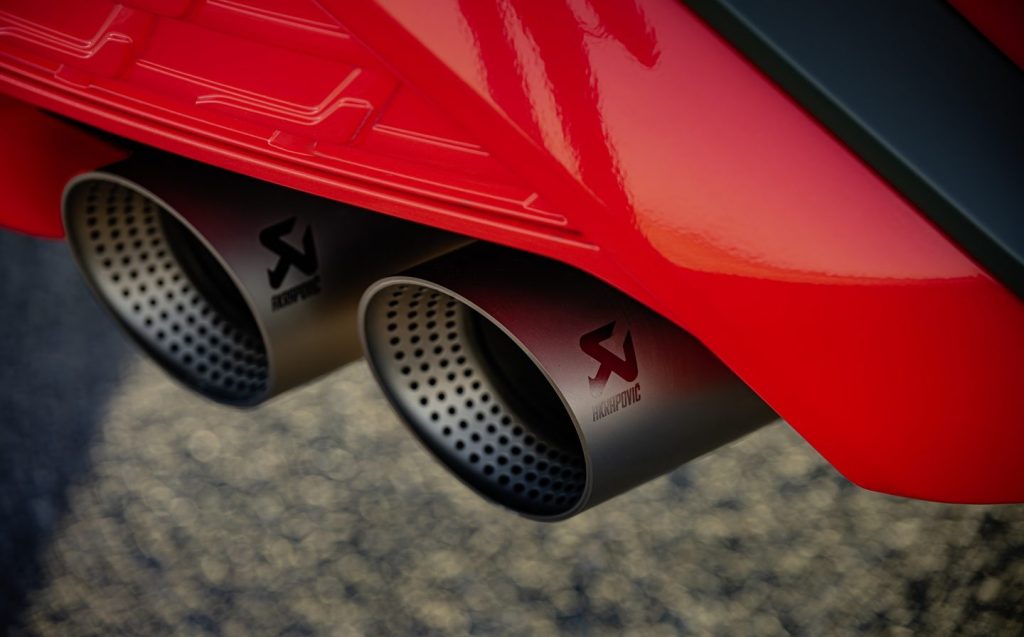
In the car’s sportier settings, the exhaust is louder, essentially. It’s sportier than the standard sound but we’d stop short of calling it melodic; the RS 3’s five-cylinder engine has nothing to worry about on that score.
As before, the S3 gets a seven-speed, dual-clutch gearbox, and even that has come in for some revision. Shame replacements for the plastic gearchange paddles weren’t part of the upgrades. Nonetheless, the shift times at full throttle are claimed to be halved, while it has been tweaked to allow quicker getaways, too.
That’s getaways from a standing start, incidentally, not as a getaway car from a bank job. Though the S3’s relative visual subtlety should mean it’s still an ideal car for that purpose now that we think of it.
The retina-searing camouflage can’t hide the fact that the S3’s body — available as a four-door saloon or five-door ‘Sportback’ hatch — is more or less as it was before. It might be closer to its big sibling than ever in the chassis stakes, but it still could be mistaken for a regular A3 S line from the outside. Most buyers are likely to approve of that approach.
It’s best to think of the new S3 as flying under the radar rather than living in the shadow of the RS 3. Even less brash siblings need to have their own personalities.
Related articles
- After reading our review of the new Audi S3, you might want to check out the glorious Audi RS 6 Avant GT
- You might like to read about another special model, the Audi e-tron Dakar
- Have you seen the interior of the 2024 Audi Q6 e-tron?
Latest articles
- Aston Martin Valkyrie AMR-LMH hypercar hits track ahead of 2025 Le Mans challenge
- Porsche has begun testing the electric Cayenne
- Cupra Leon 272 eHybrid 2024 review: Bigger battery, better tech … but is it a Cupra?
- Porsche 911 GTS 2024 review: Hybrid heresy or more Stuttgart genius?
- Extended test: 2023 Vauxhall Astra Sports Tourer GS PHEV
- Ford Capri revival has faced a lot of flak… but are buyers put off? Here’s what visitors to the Festival of Speed had to say
- F1 2024 calendar and race reports: What time the next grand prix starts and what happened in the previous rounds
- ‘No timeframe’ for how long Volvo’s returning estate cars will be on sale in UK
- Kia Picanto 2024 review: Updates add spice to cute Korean city car


